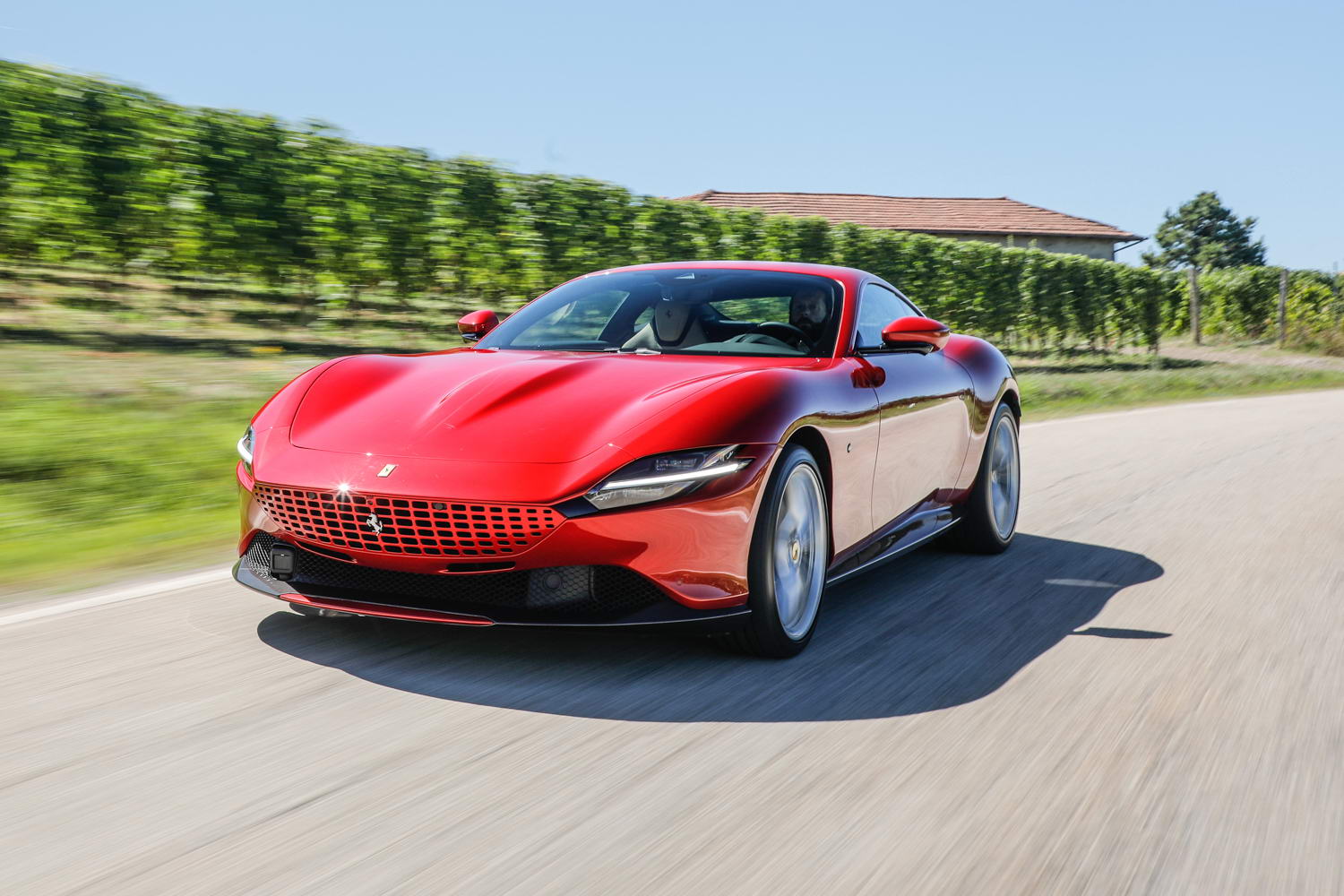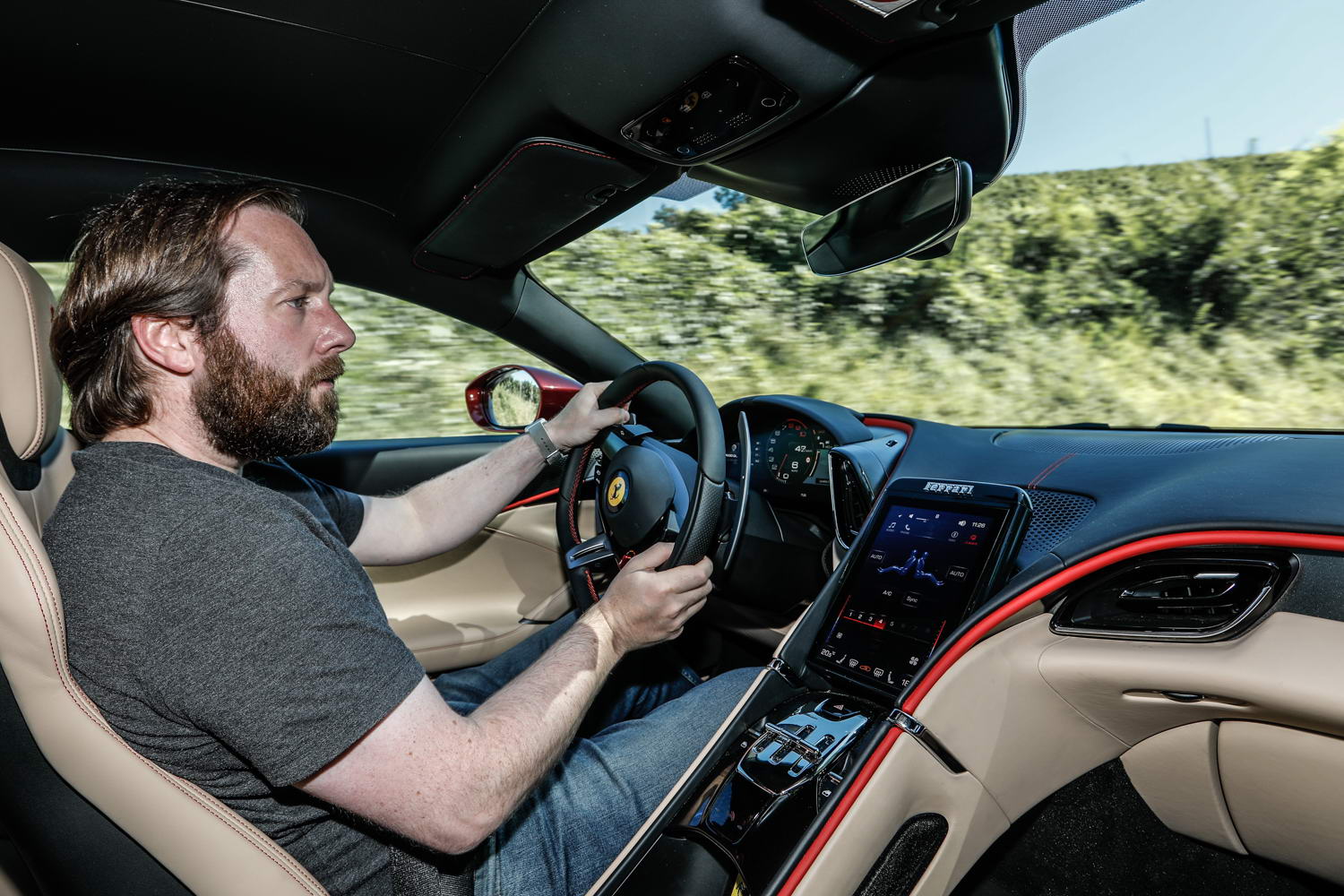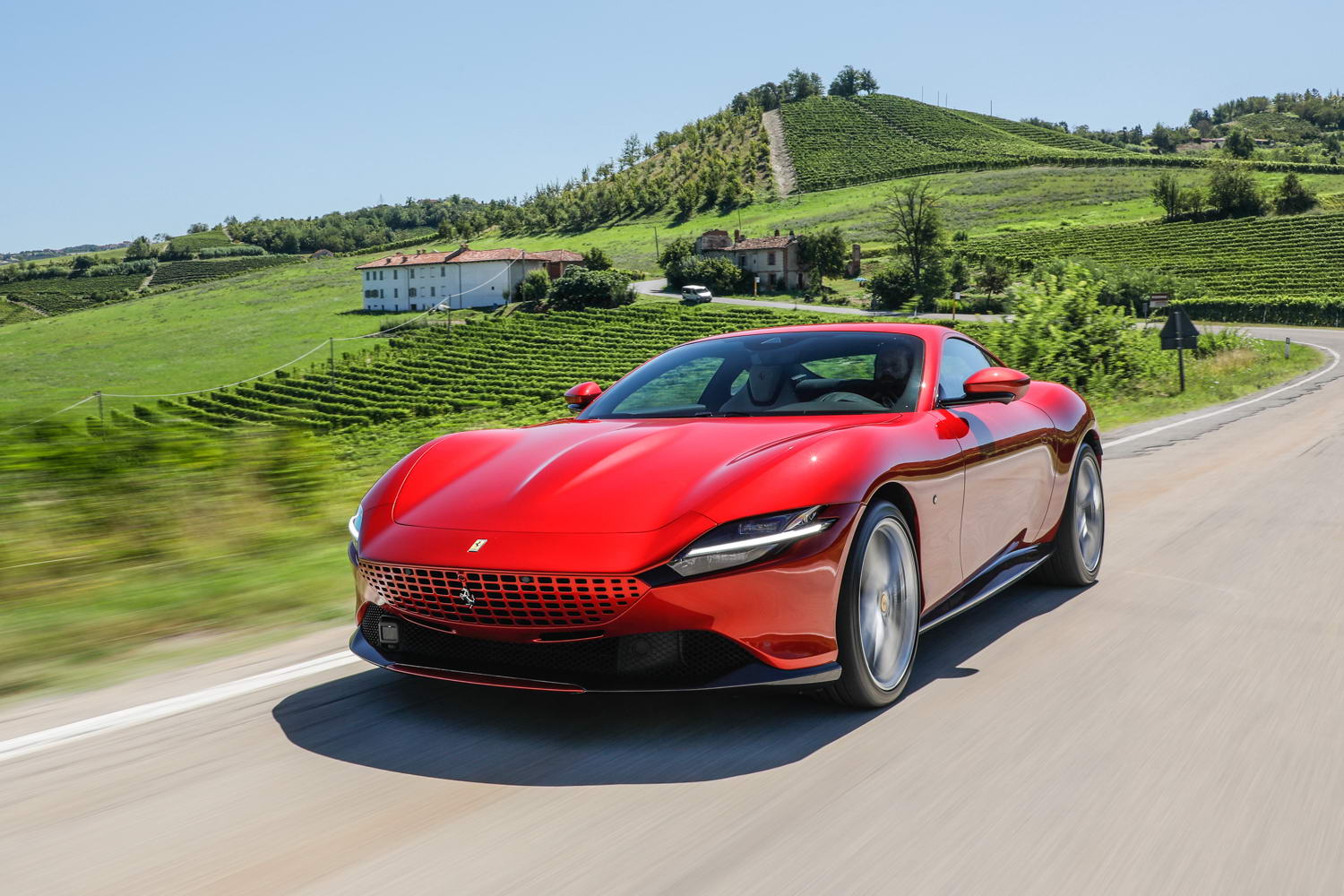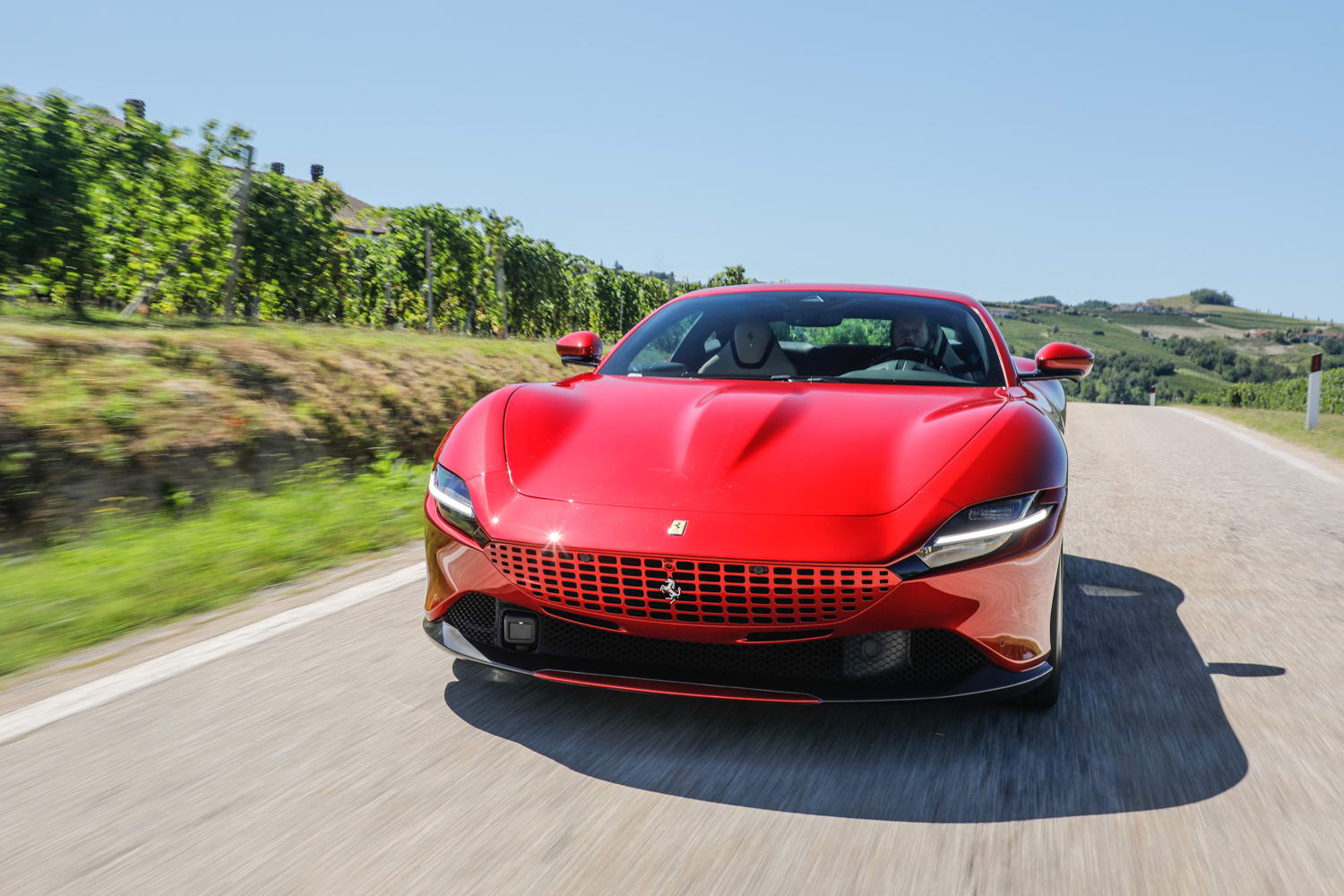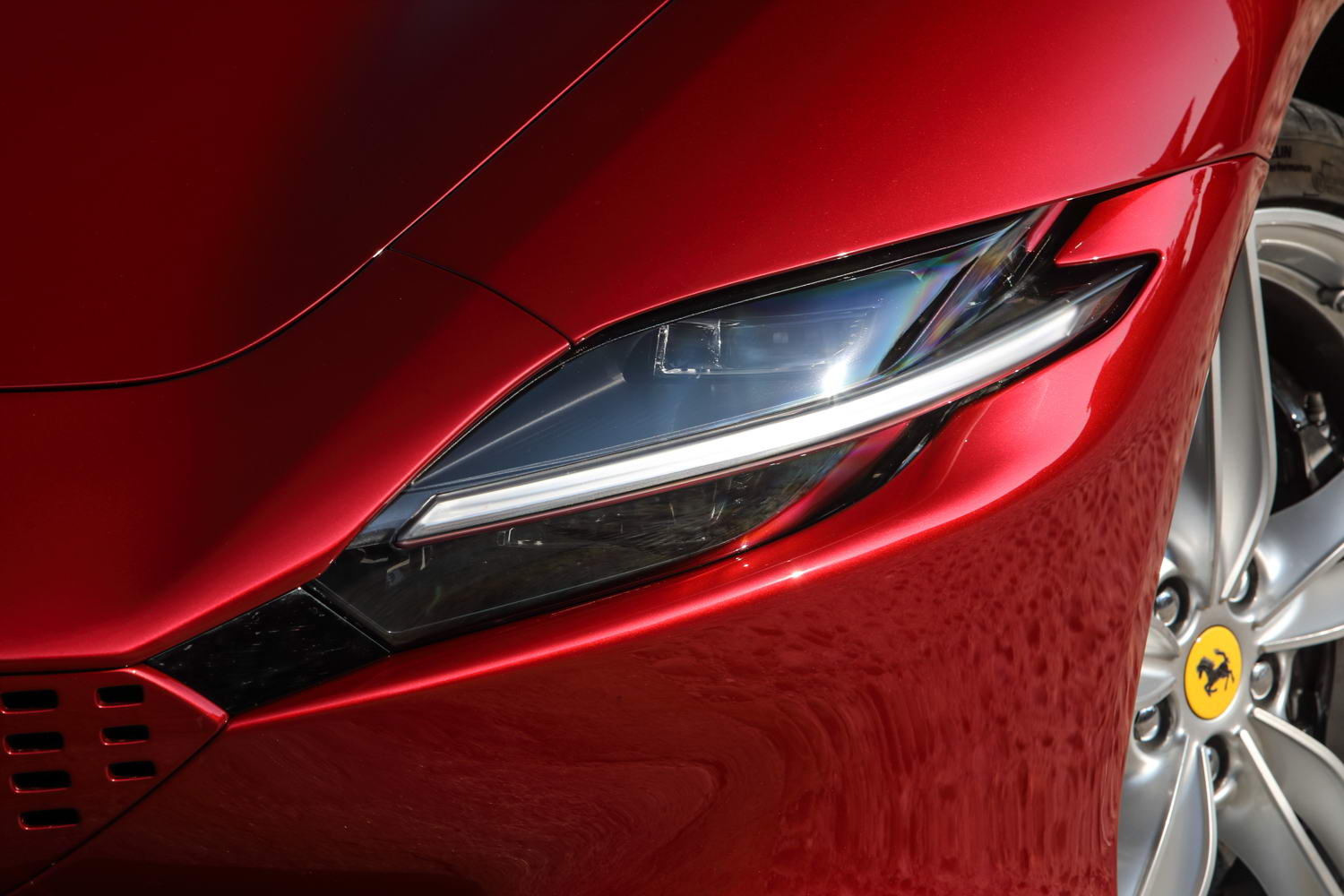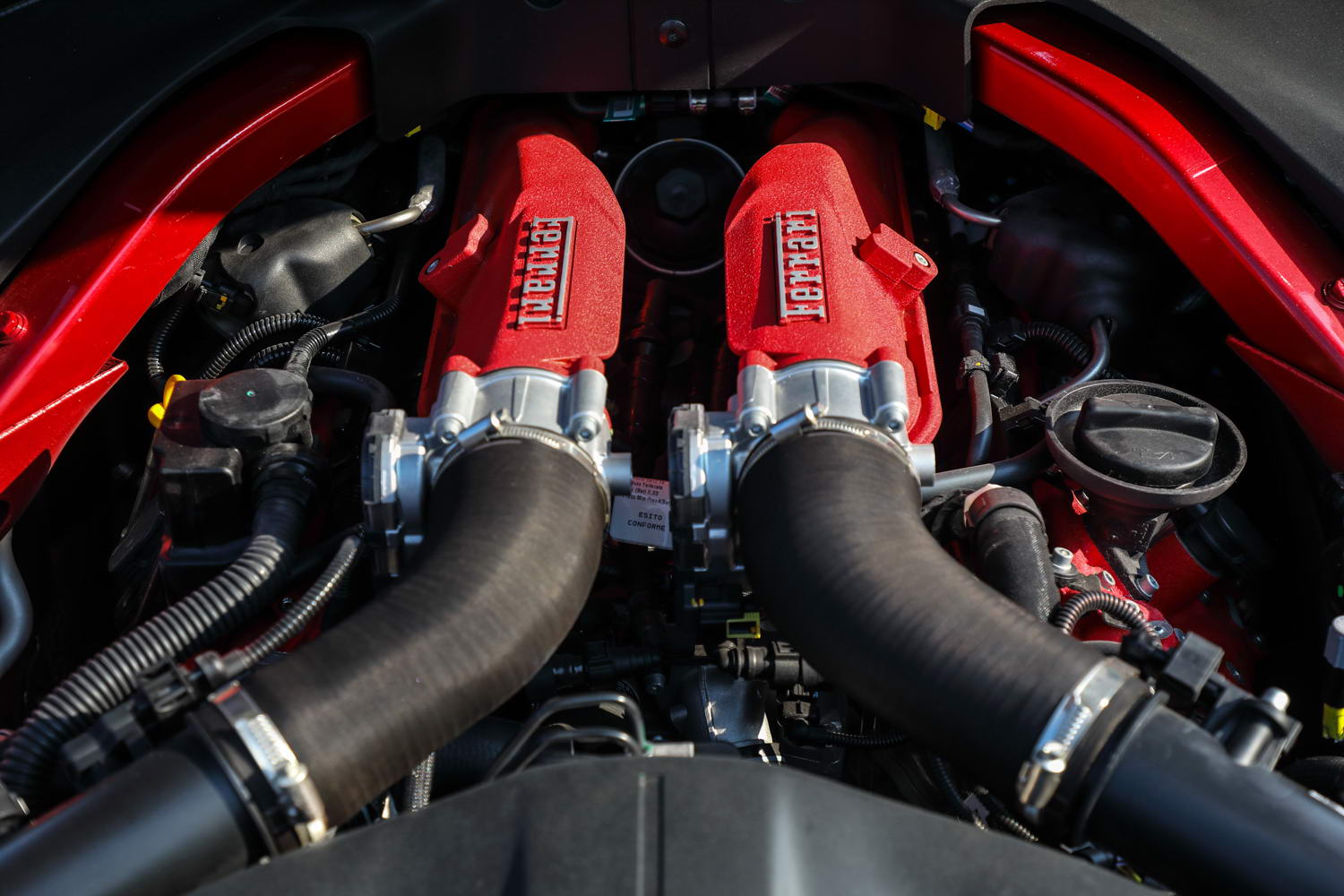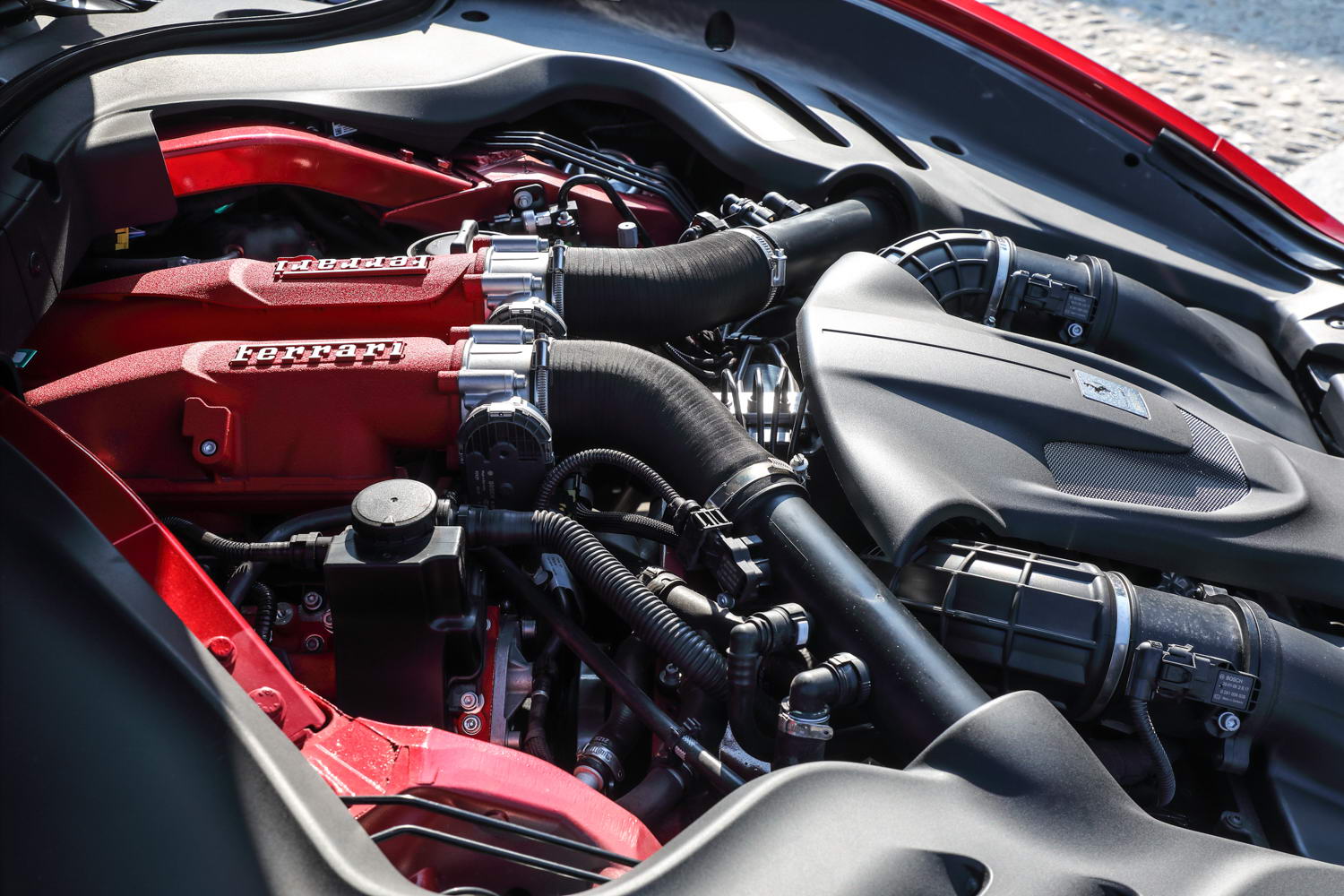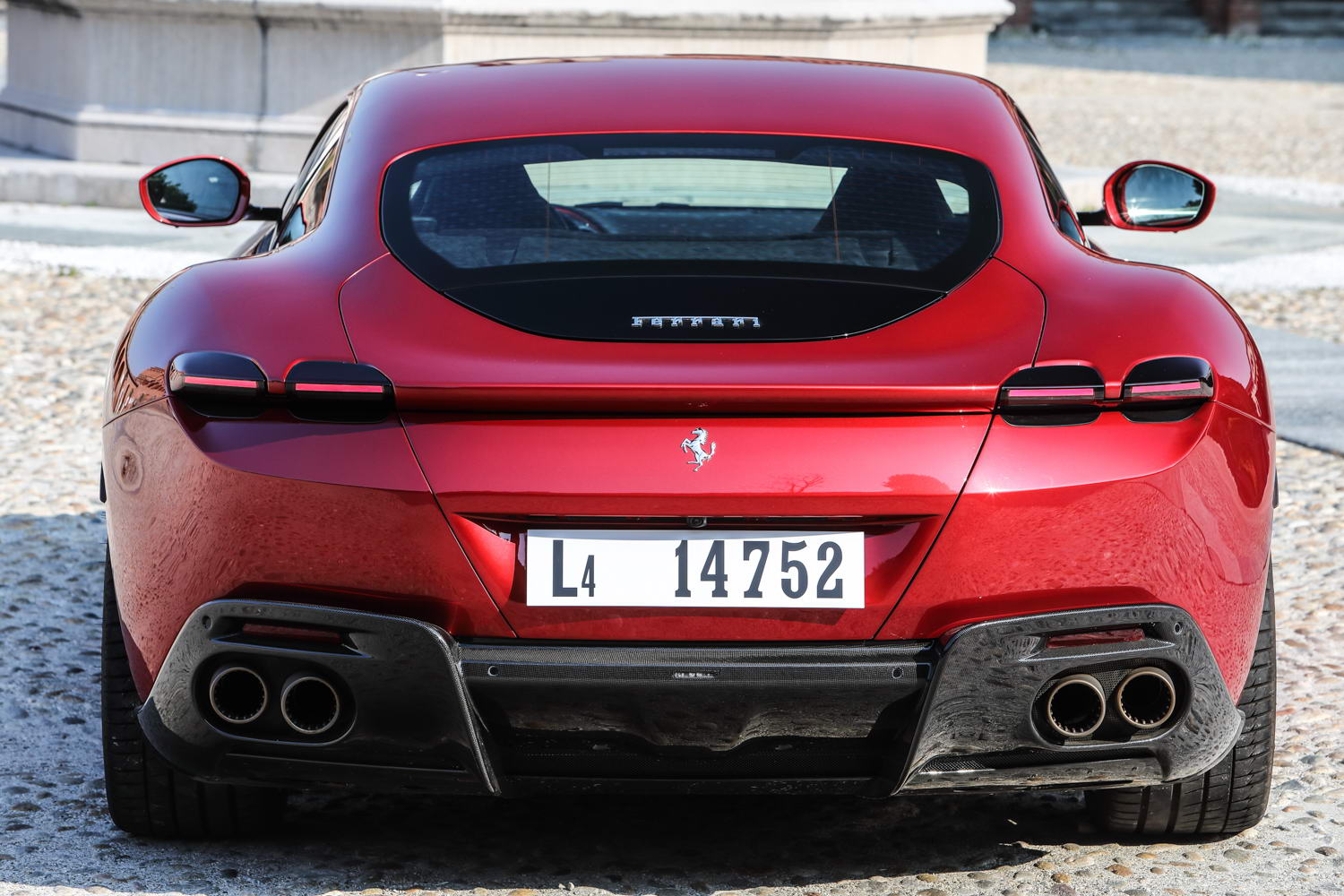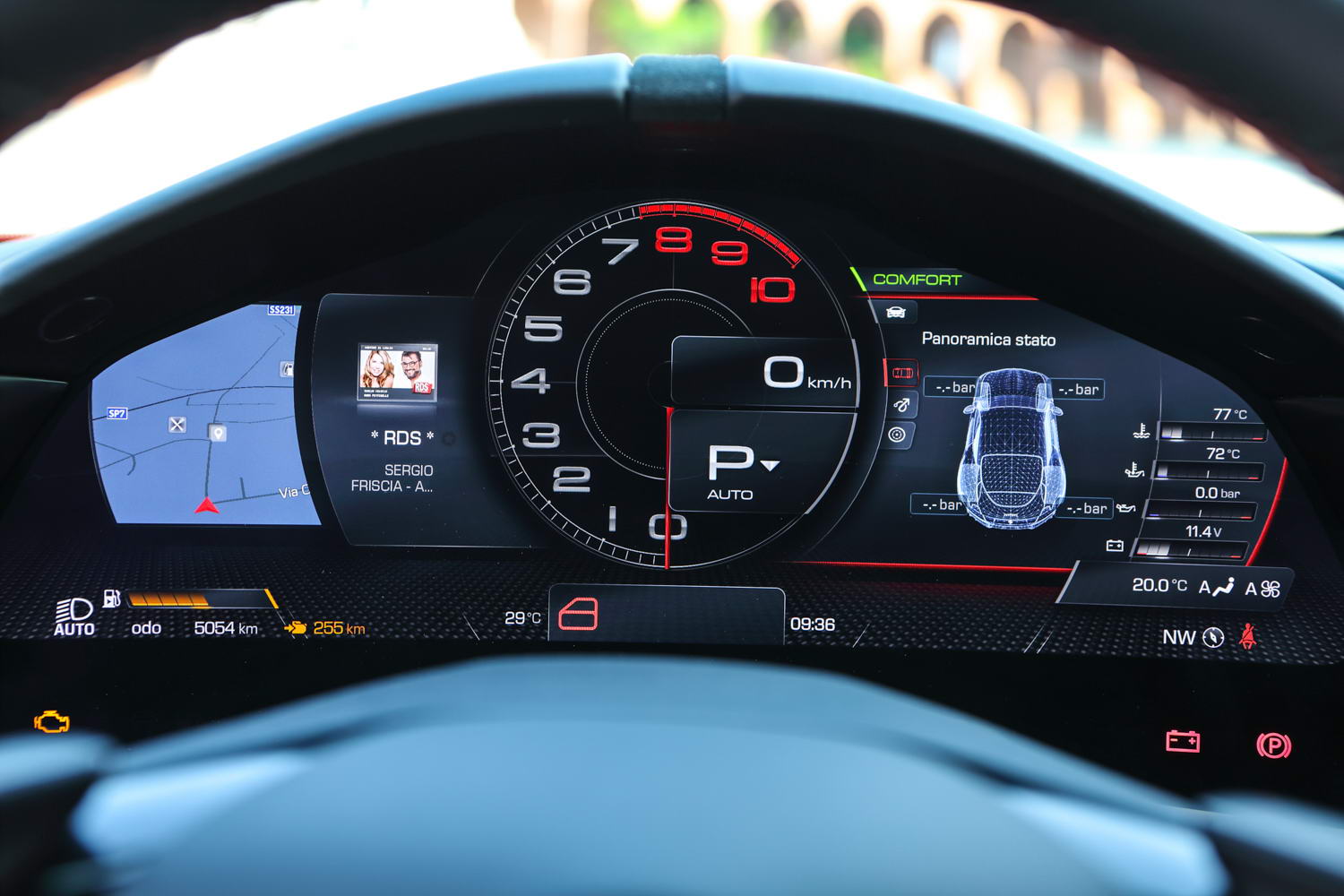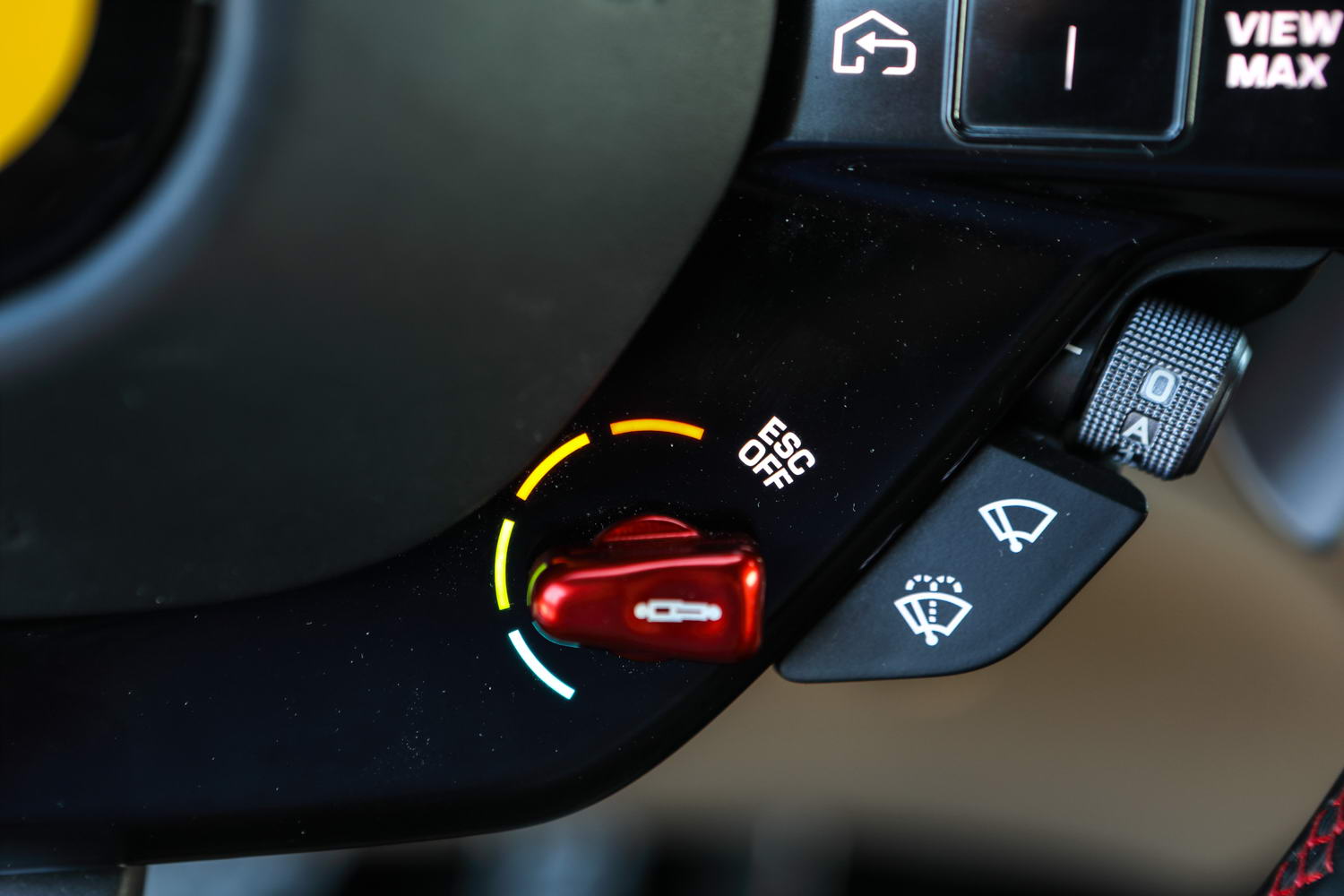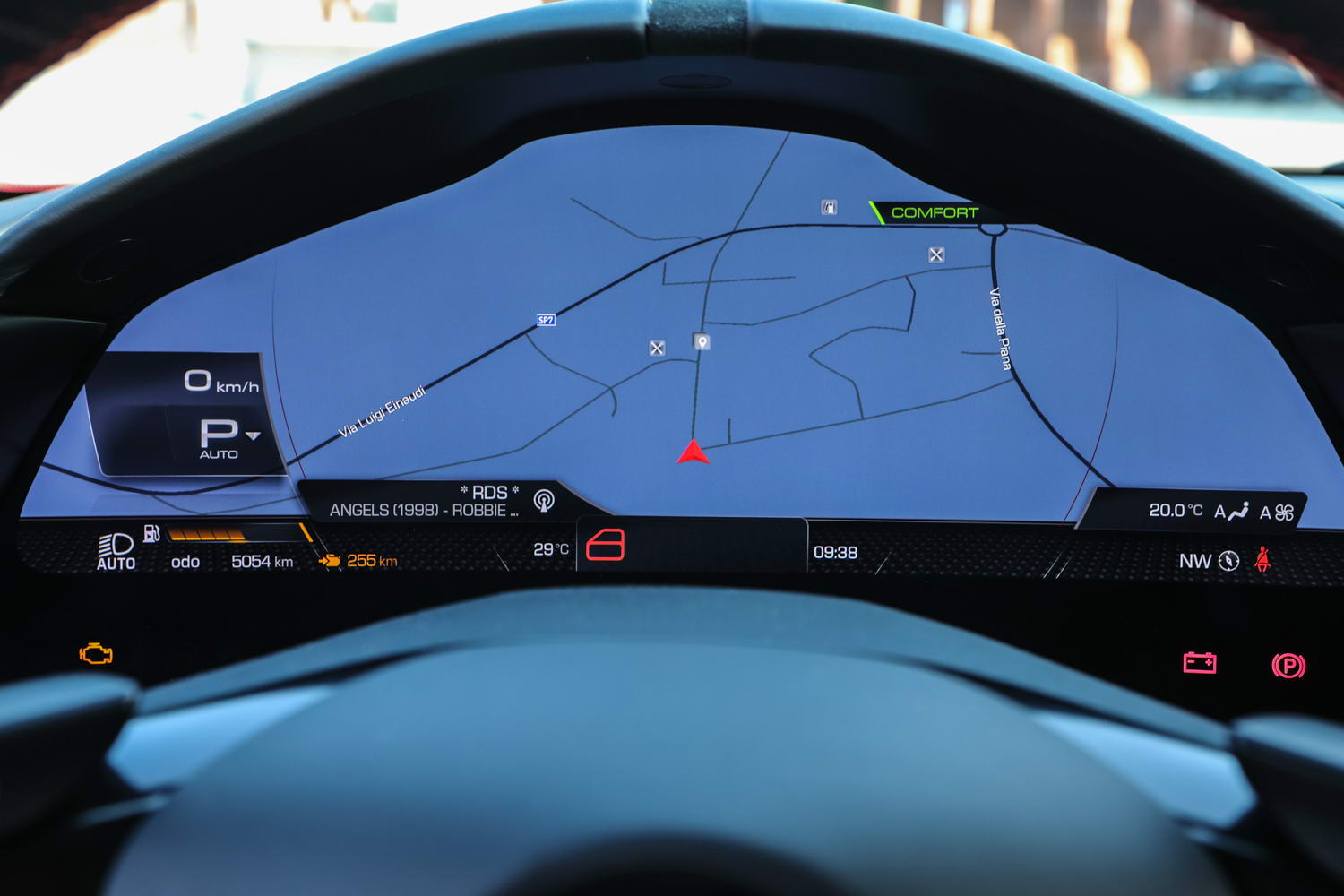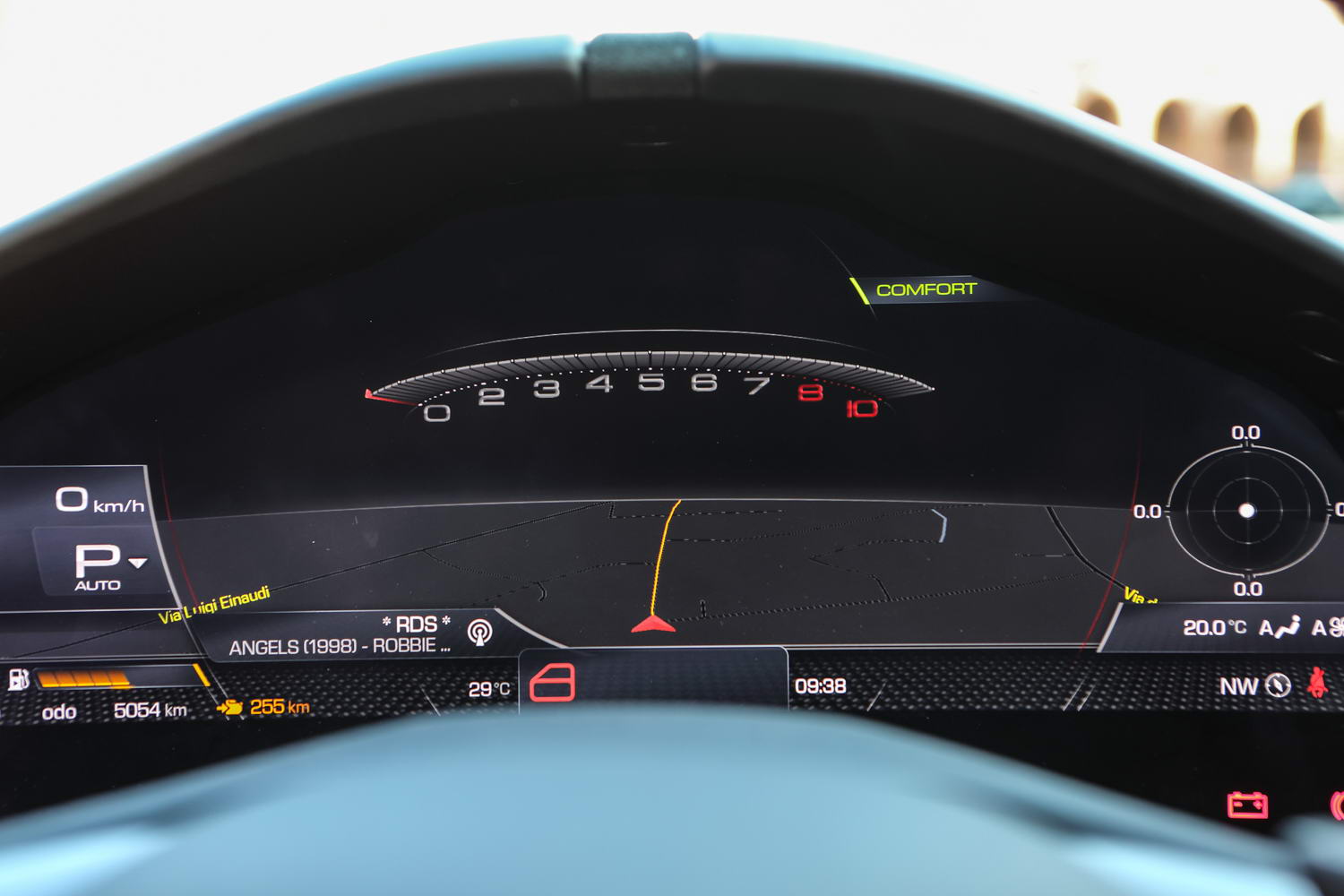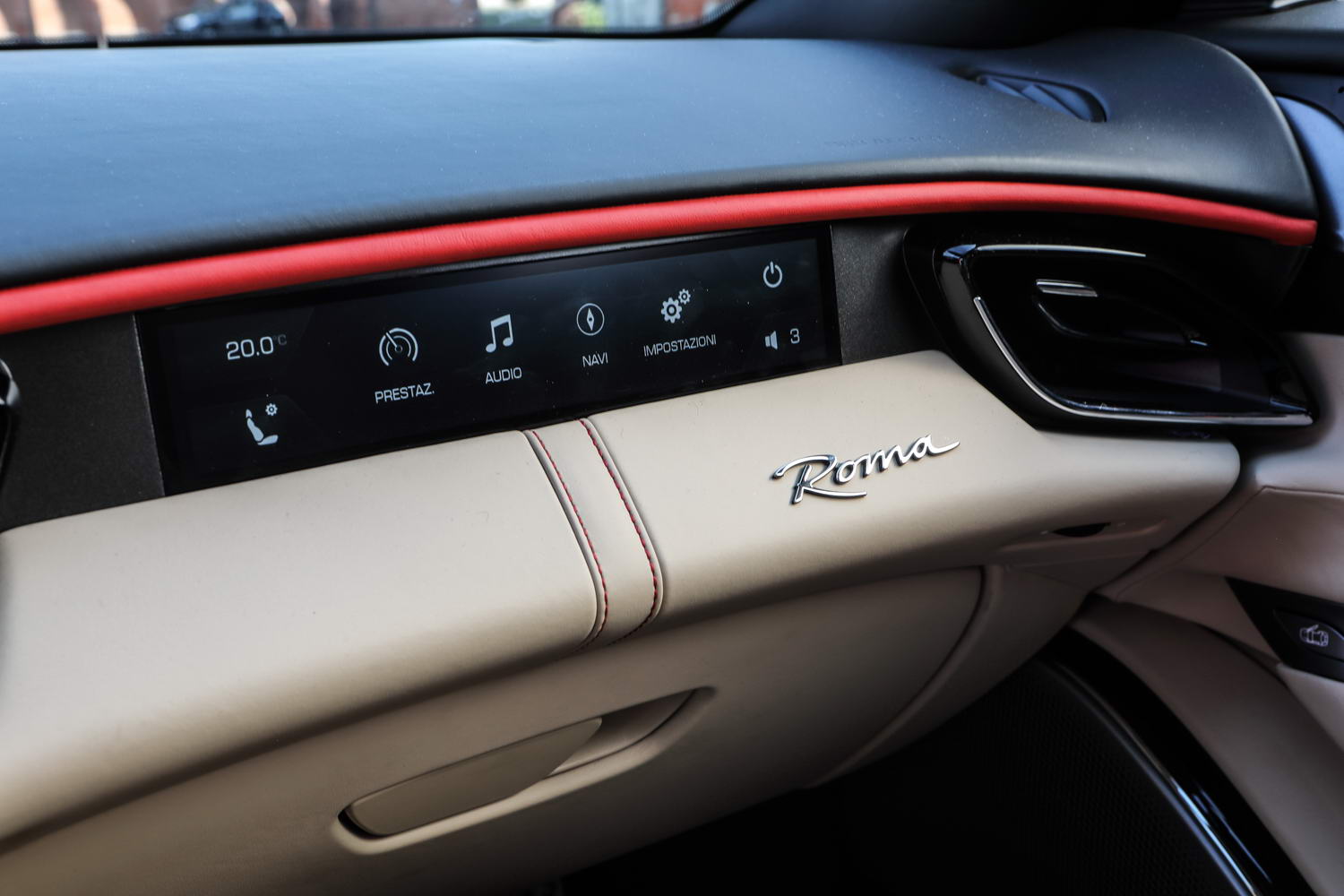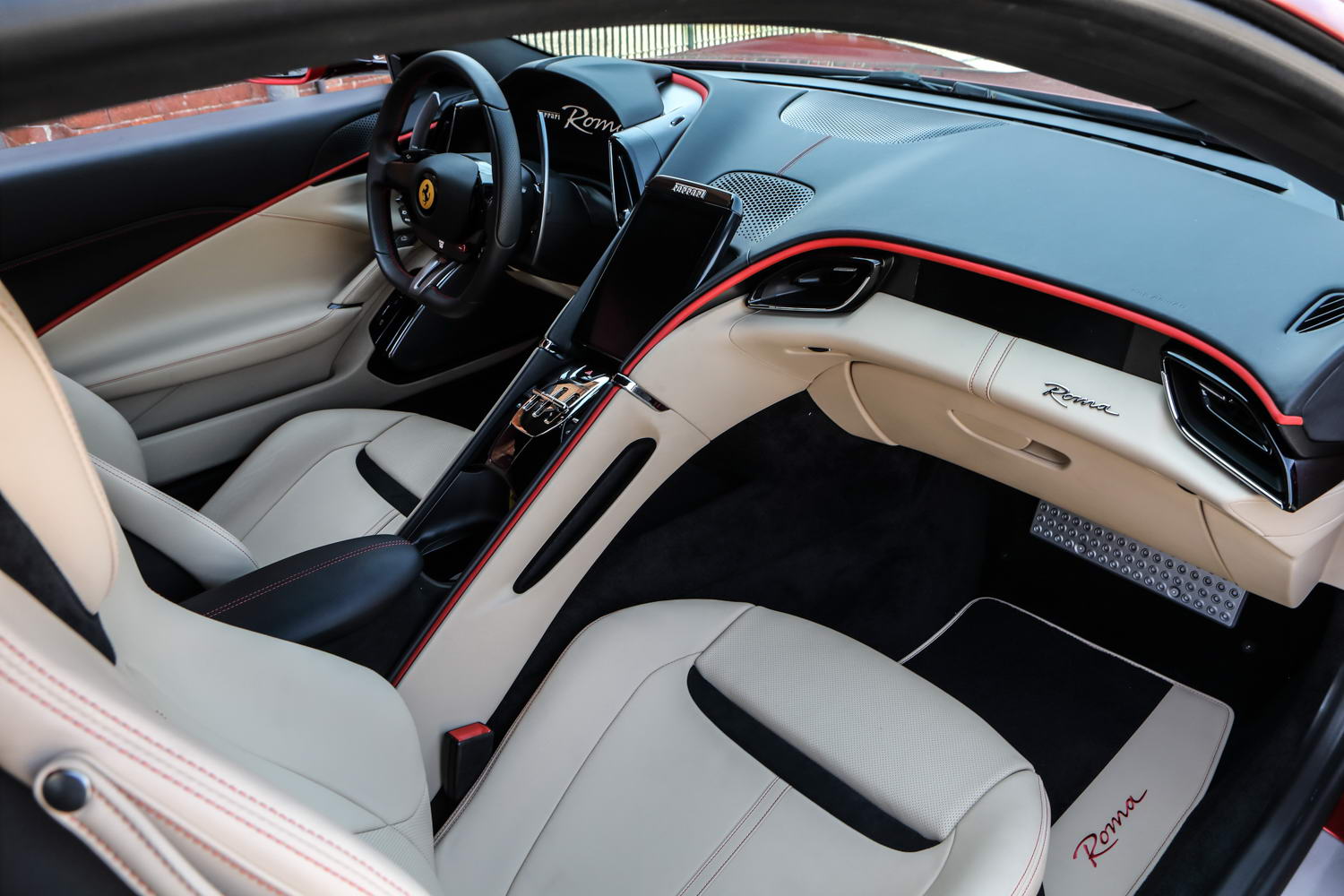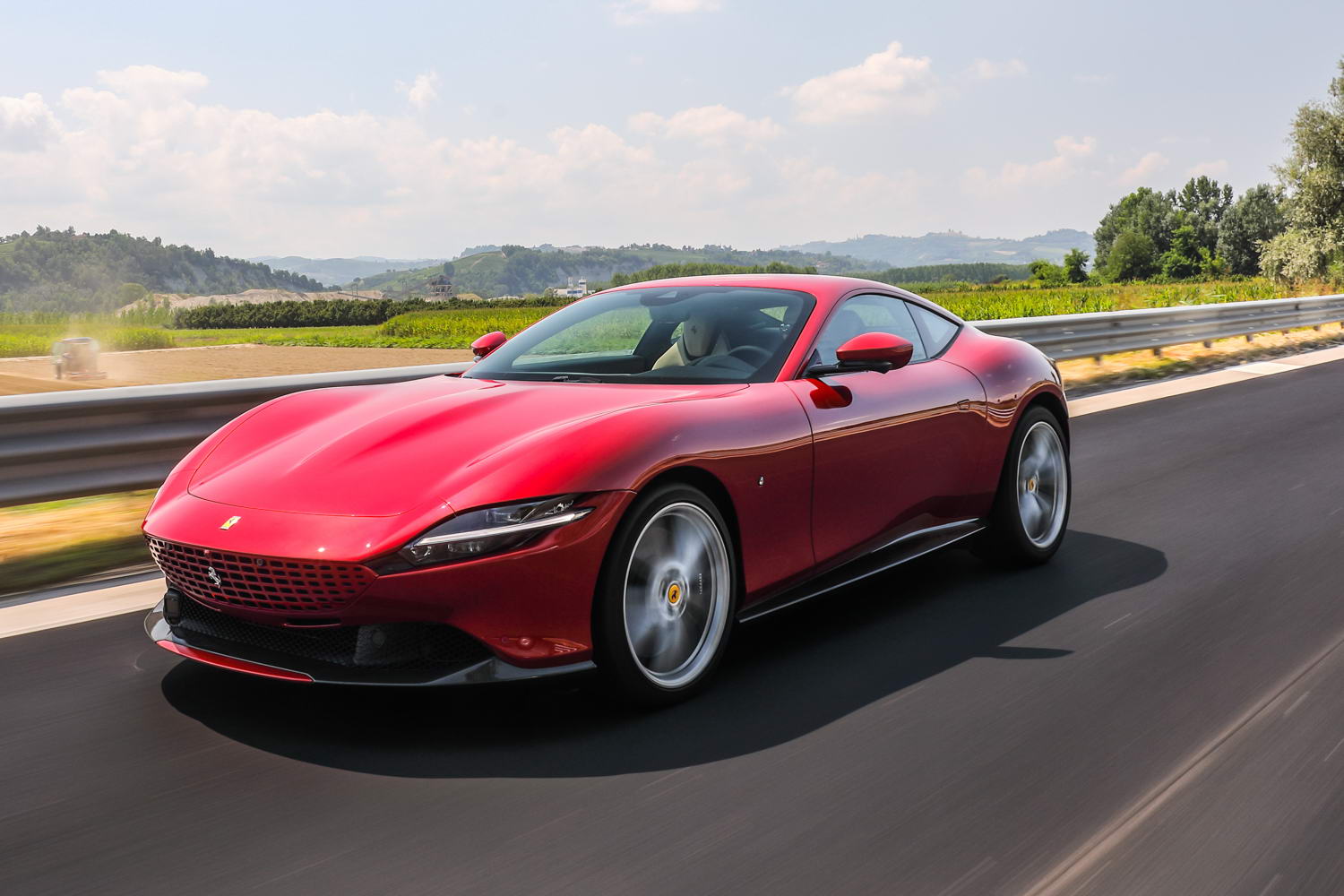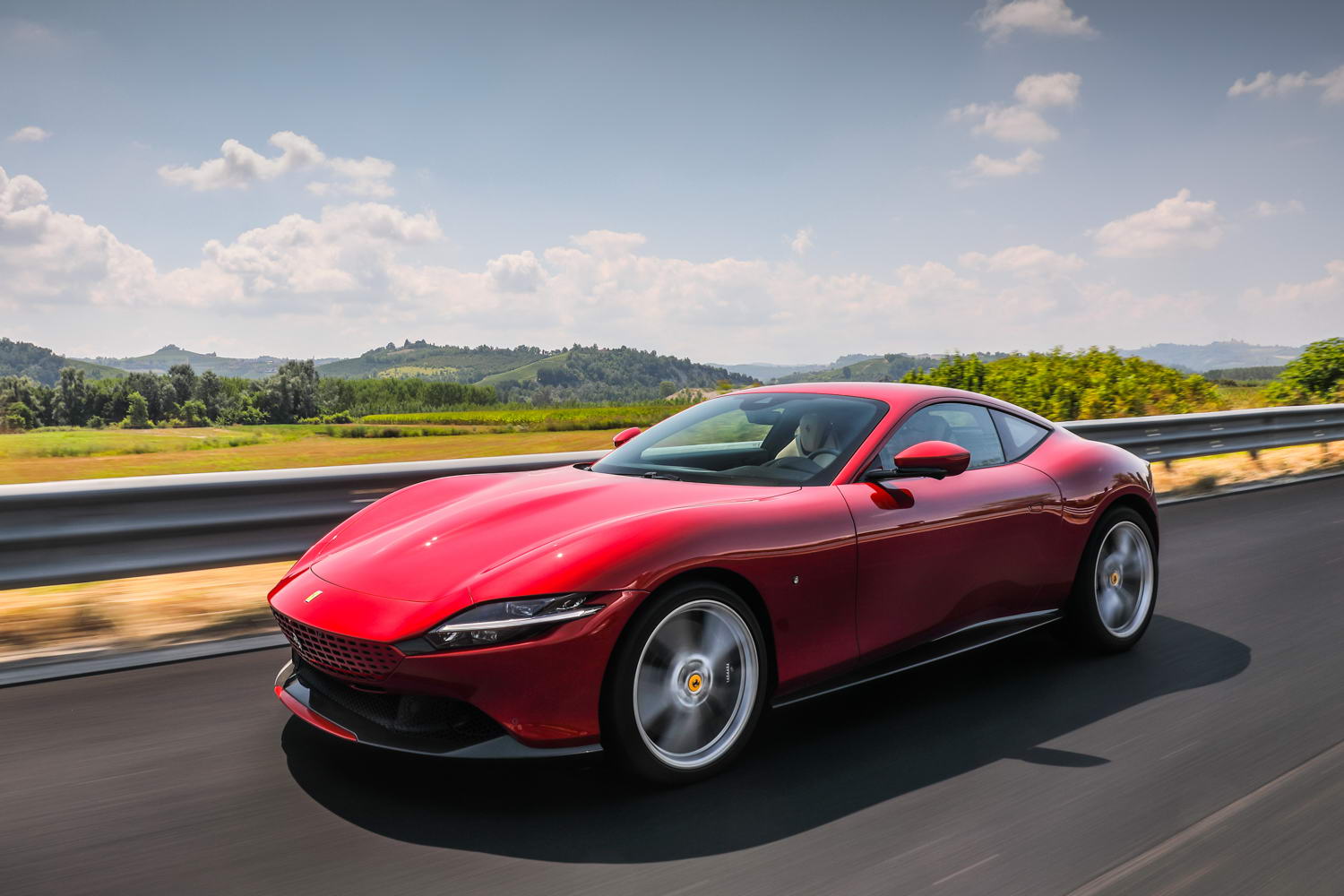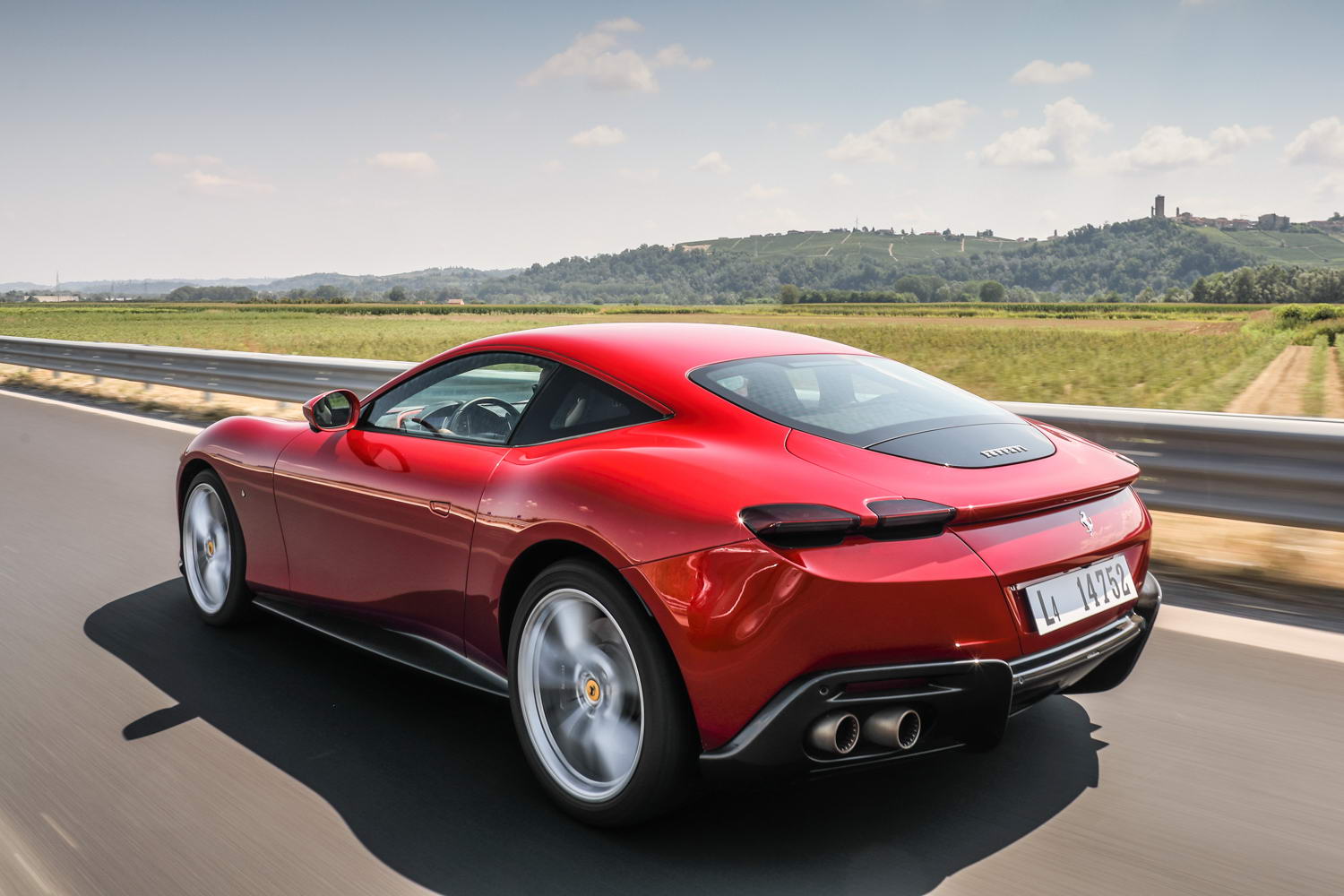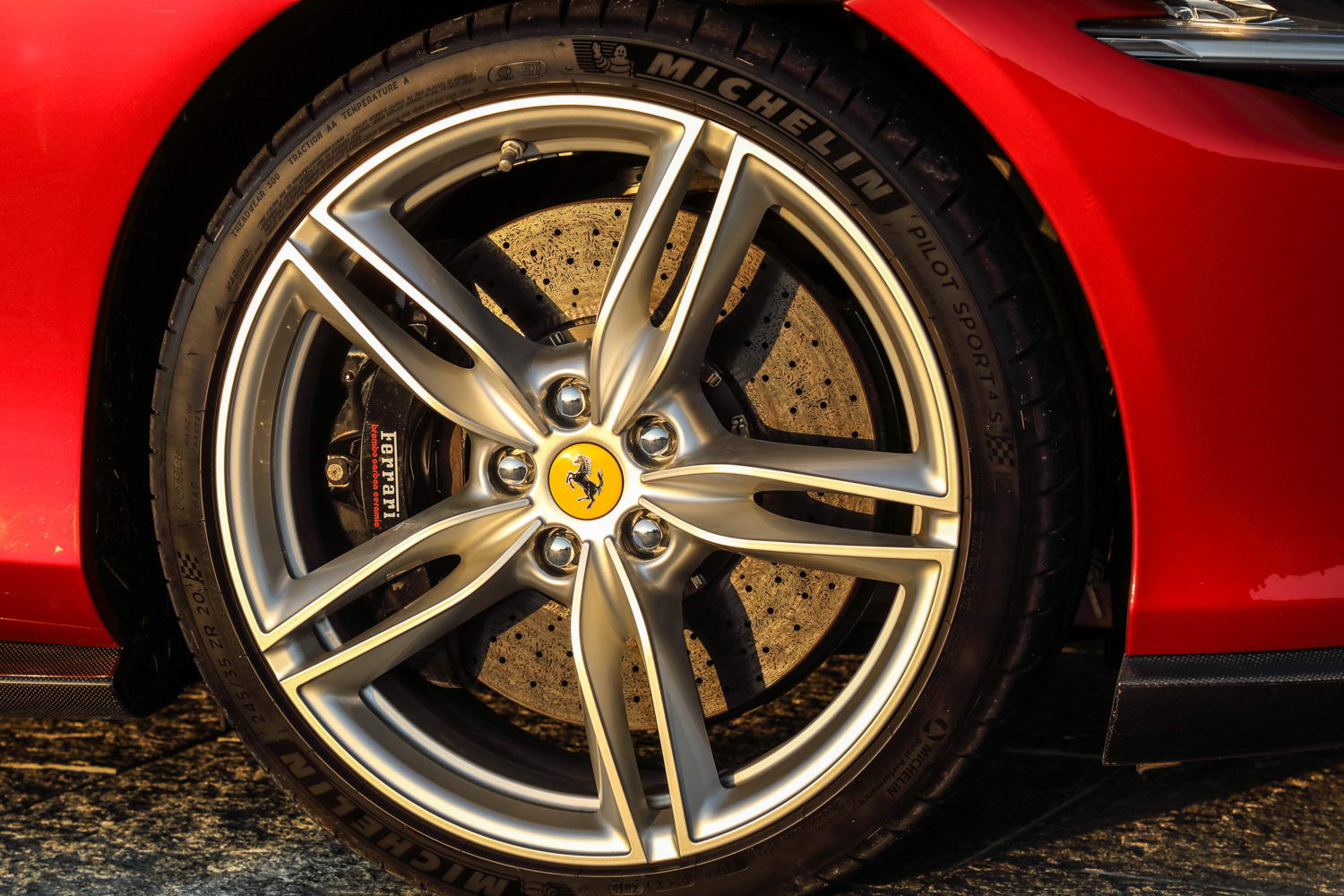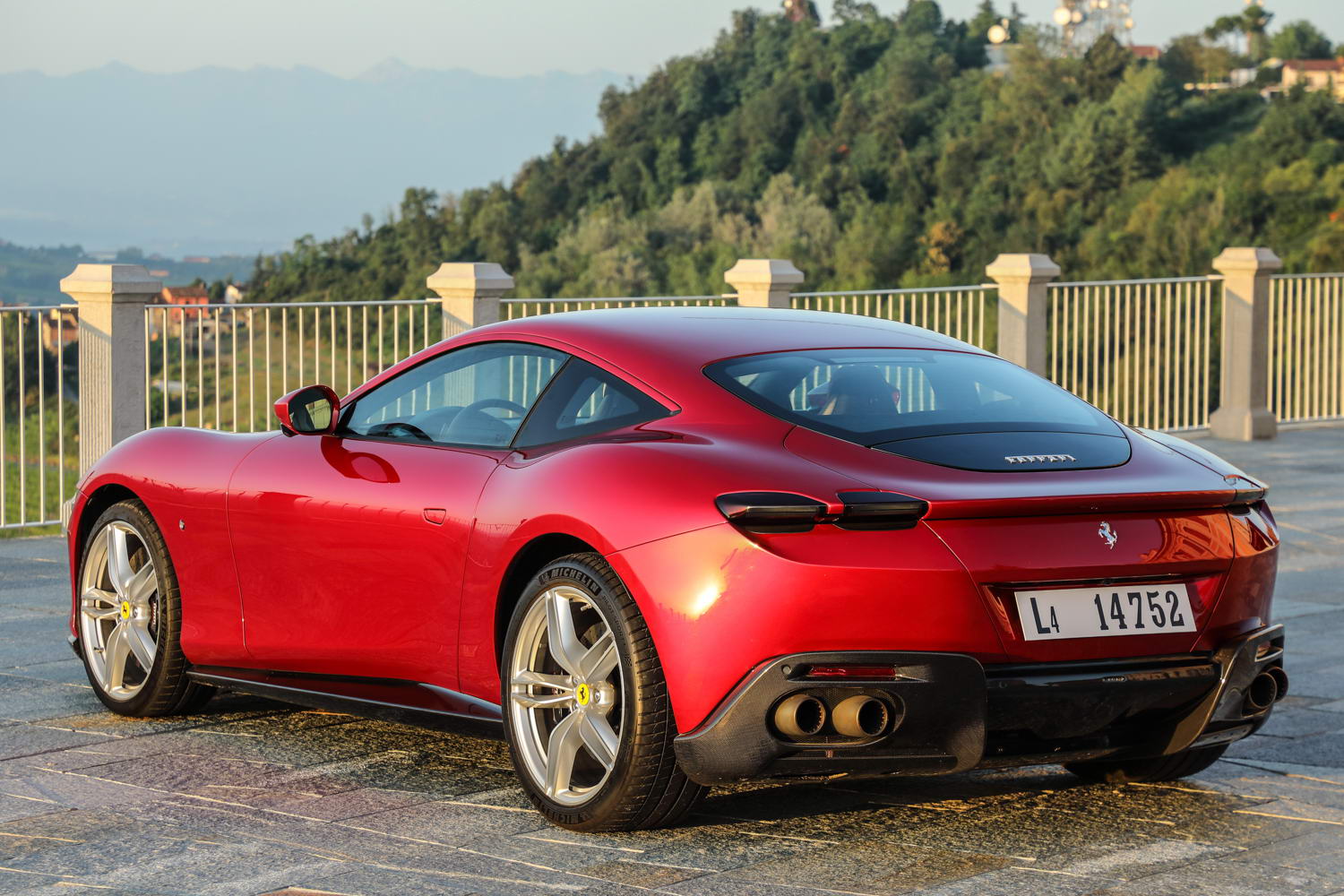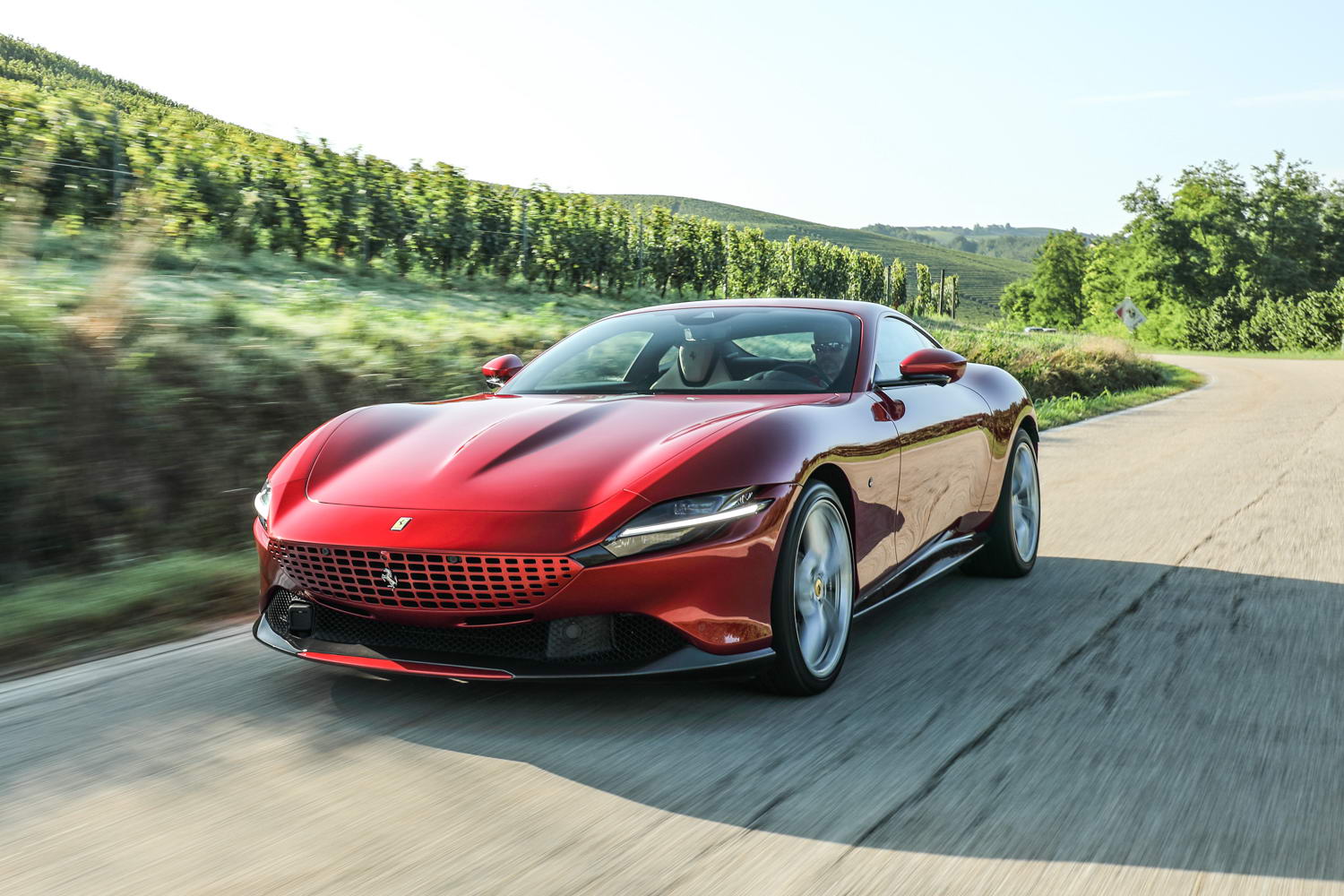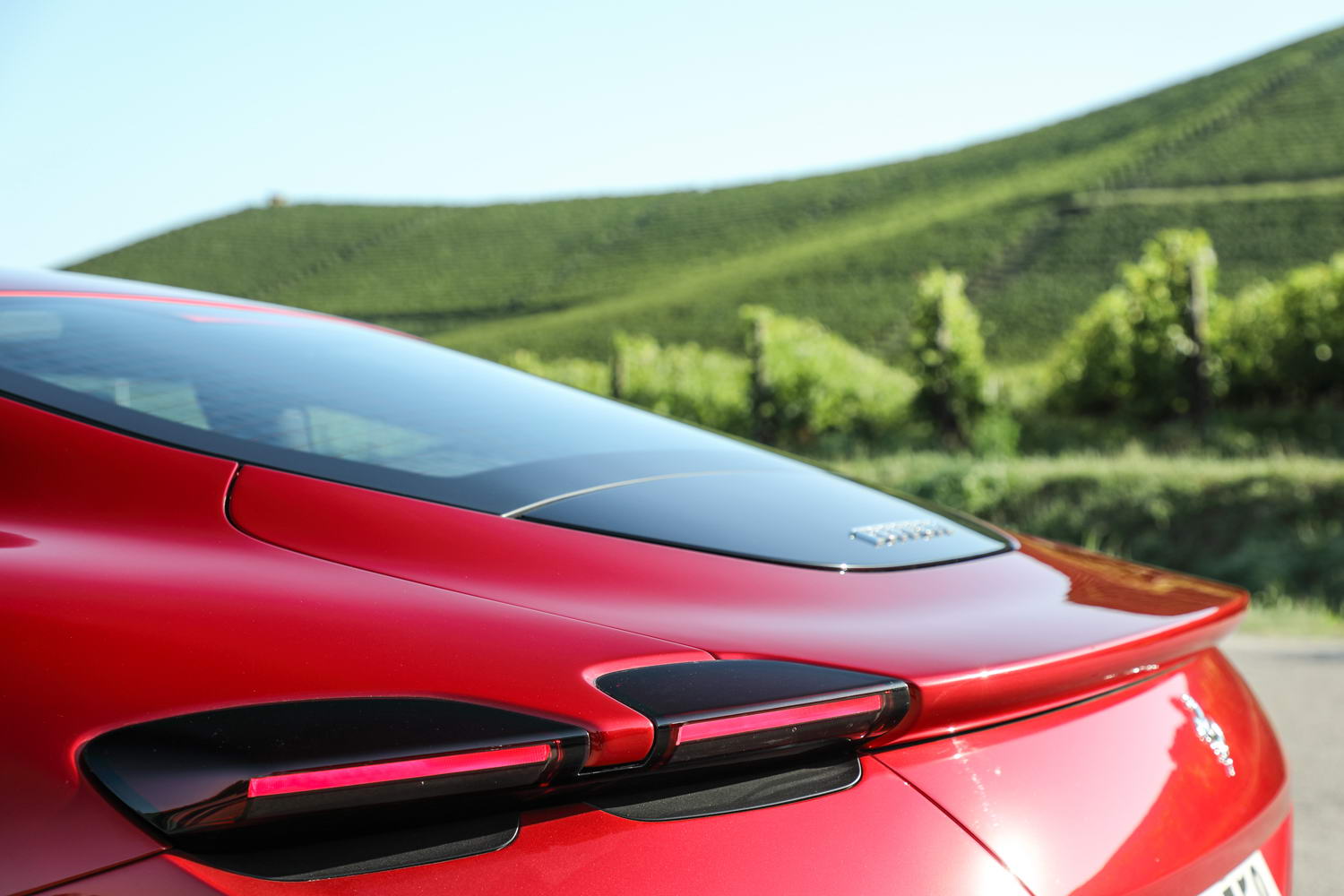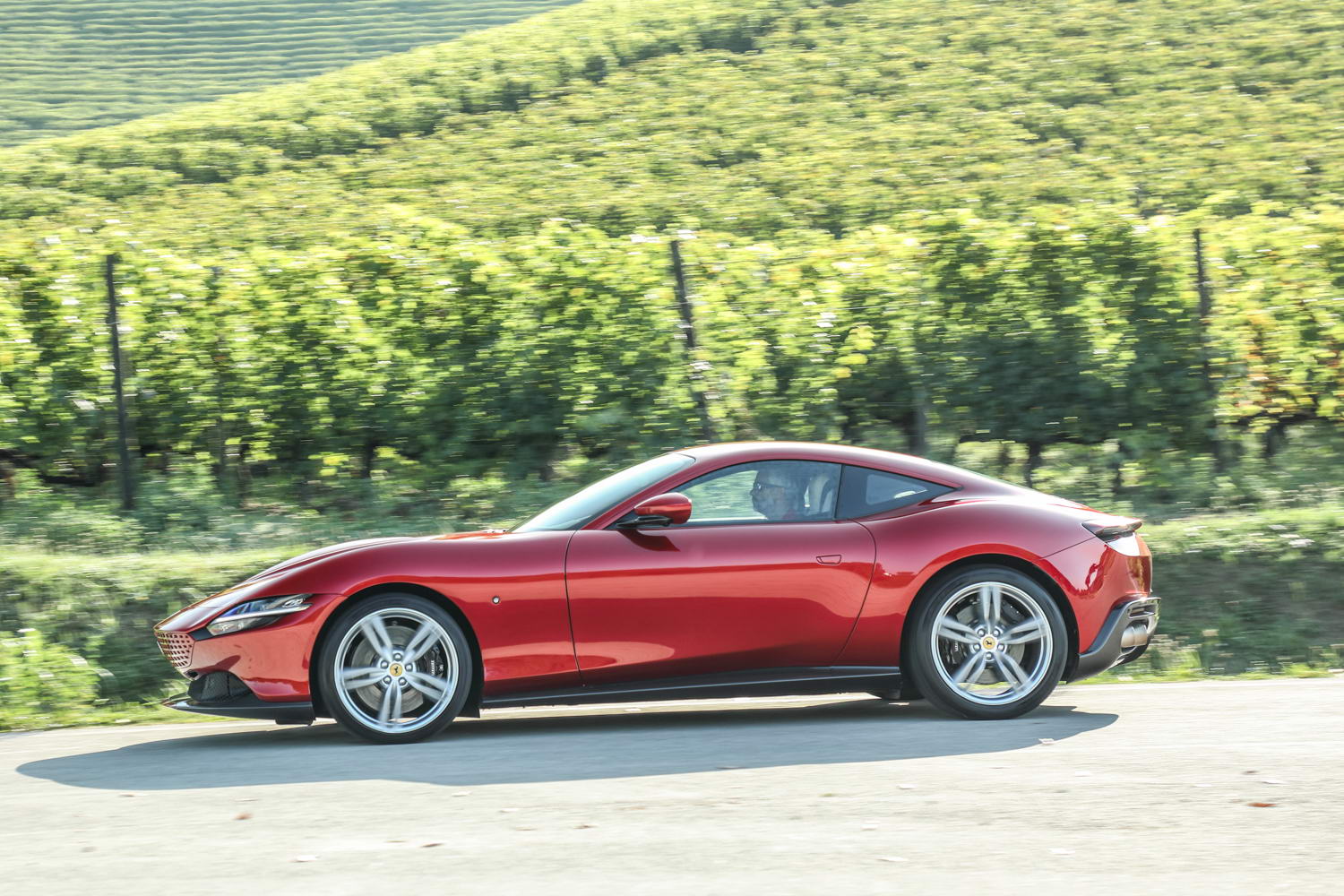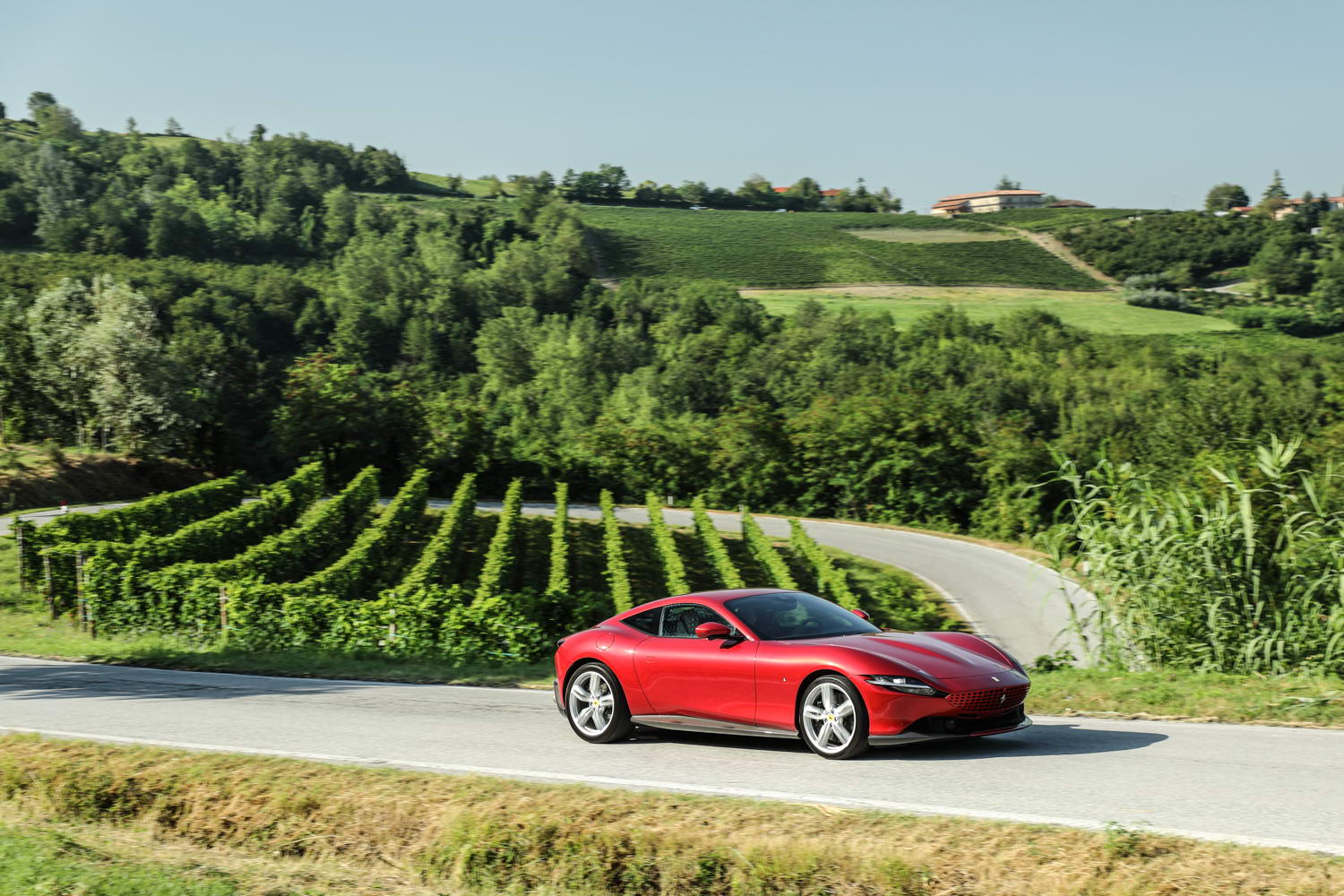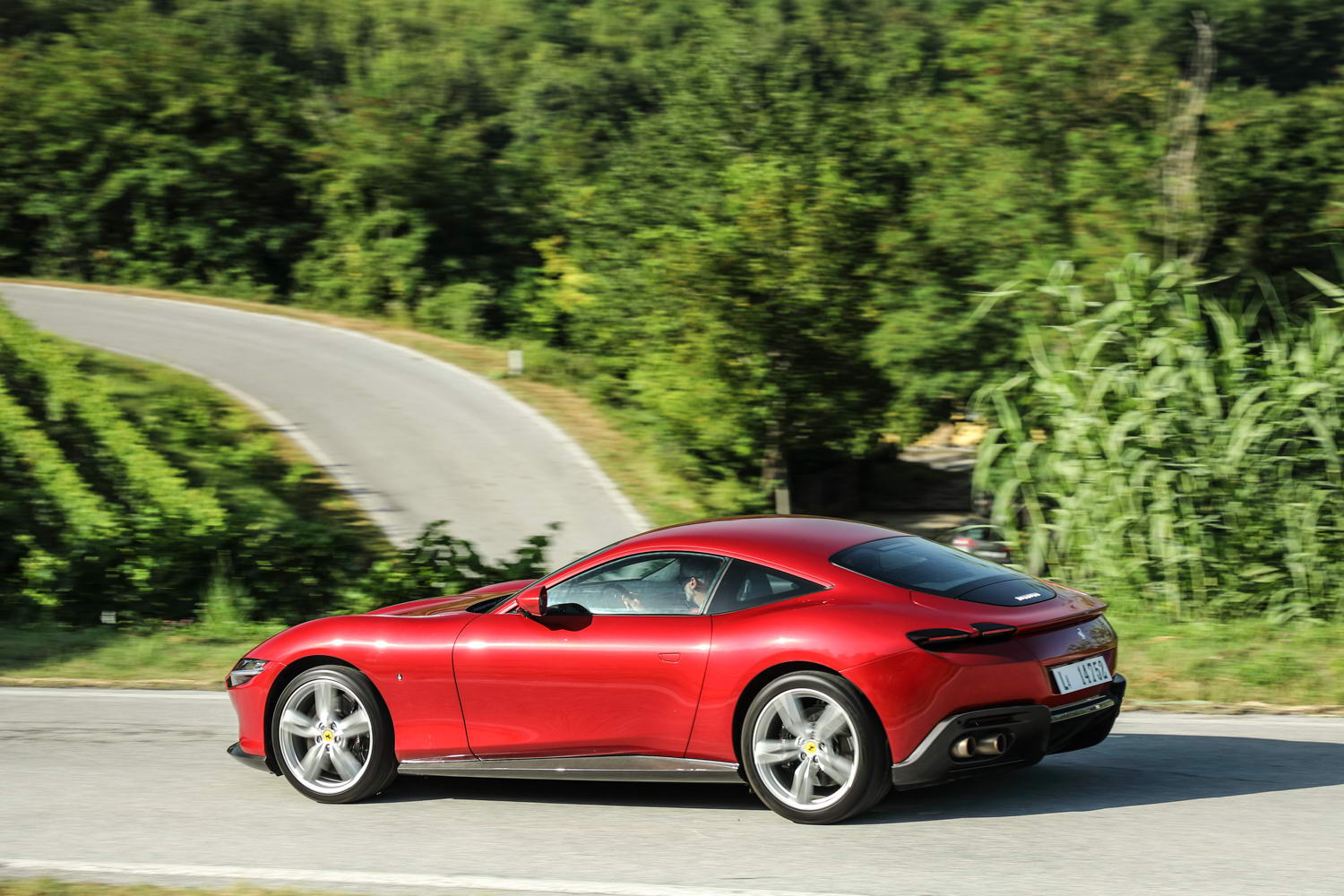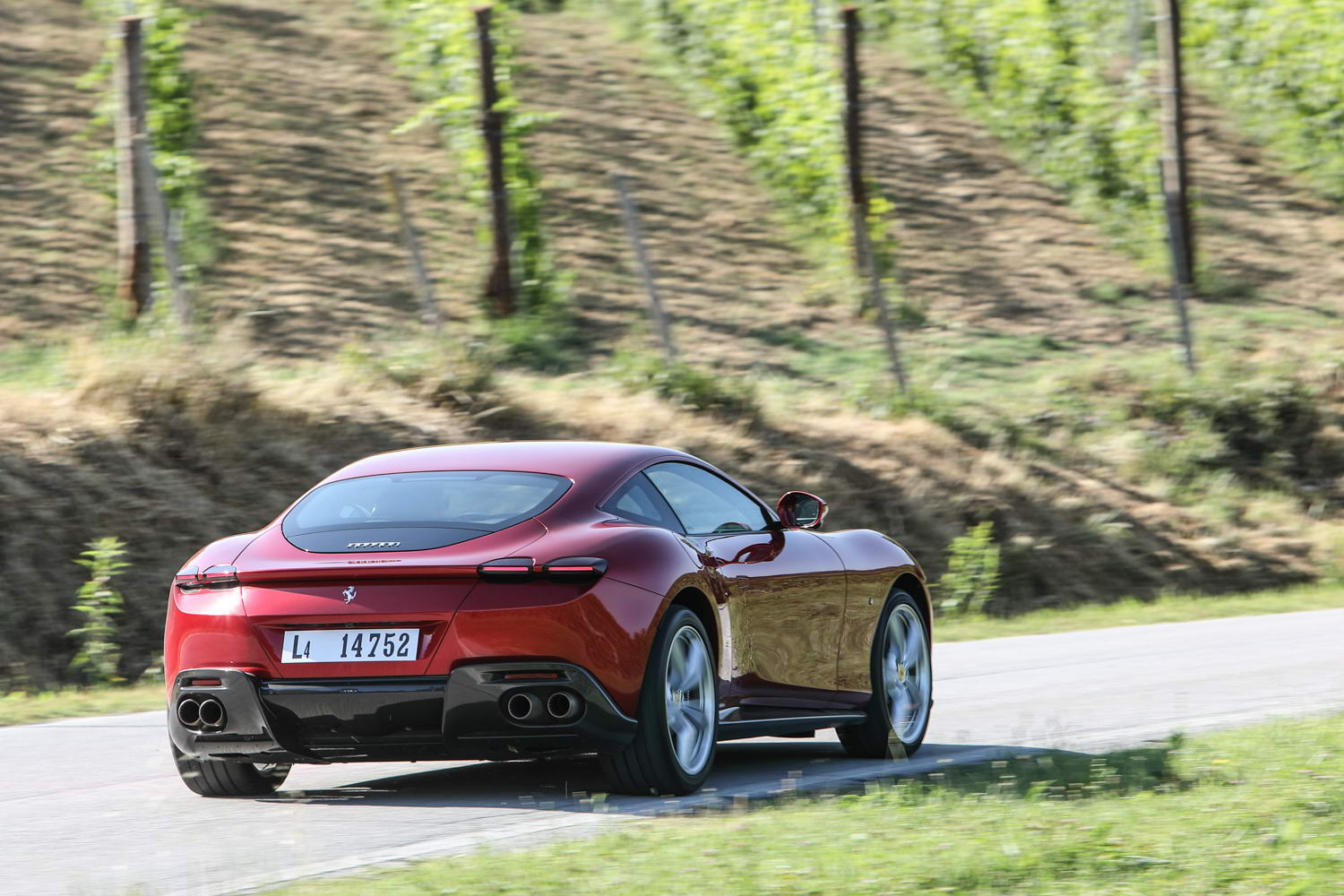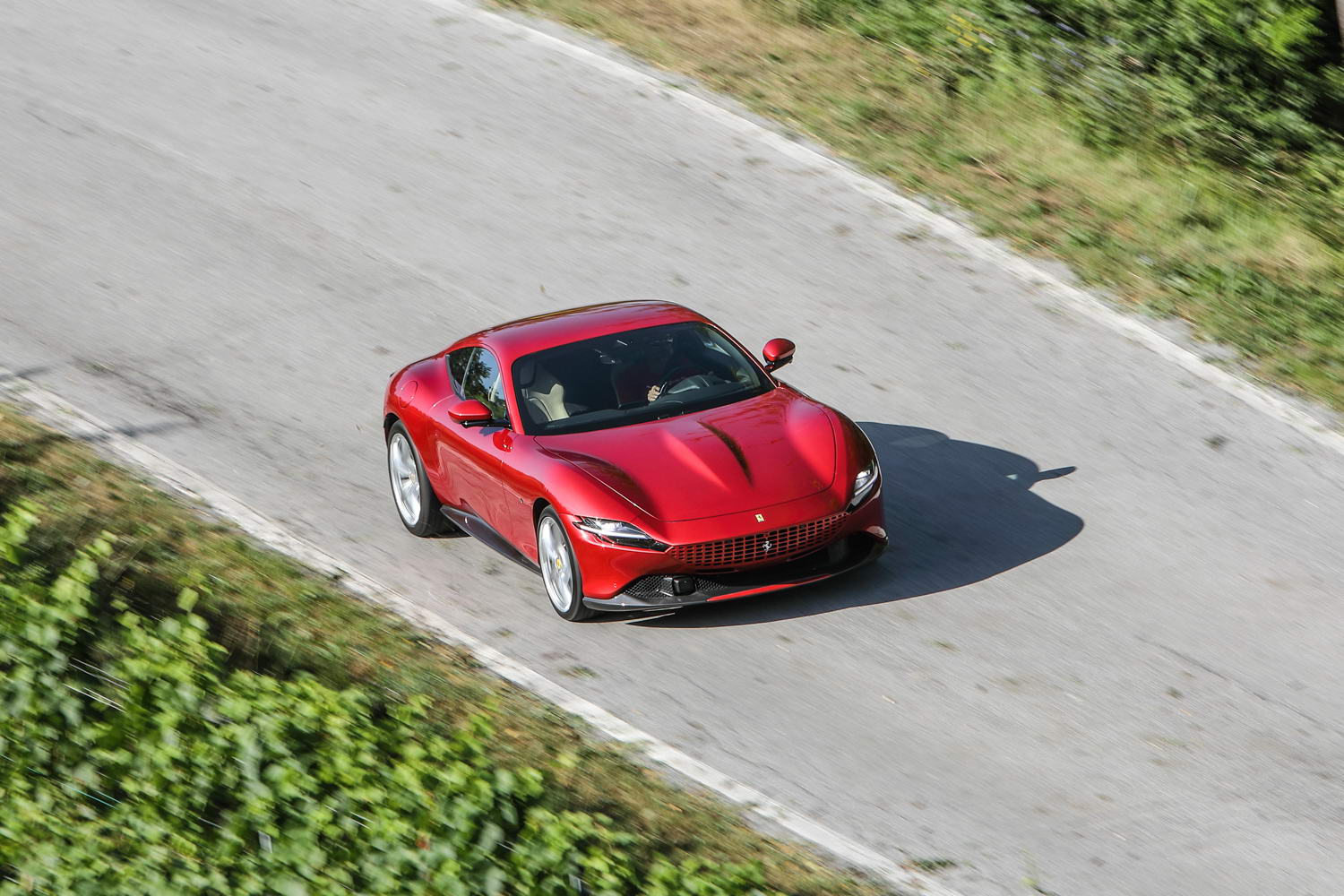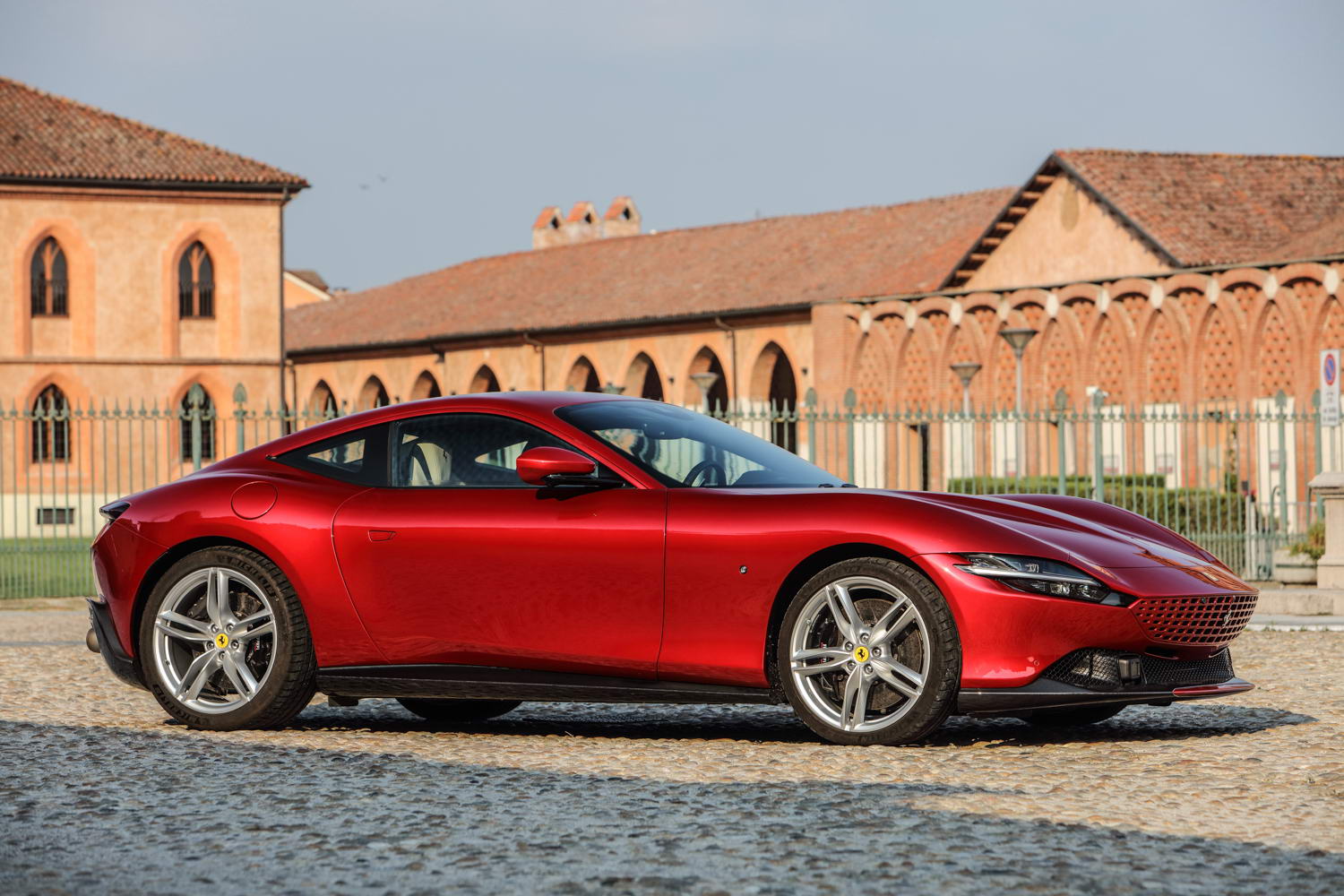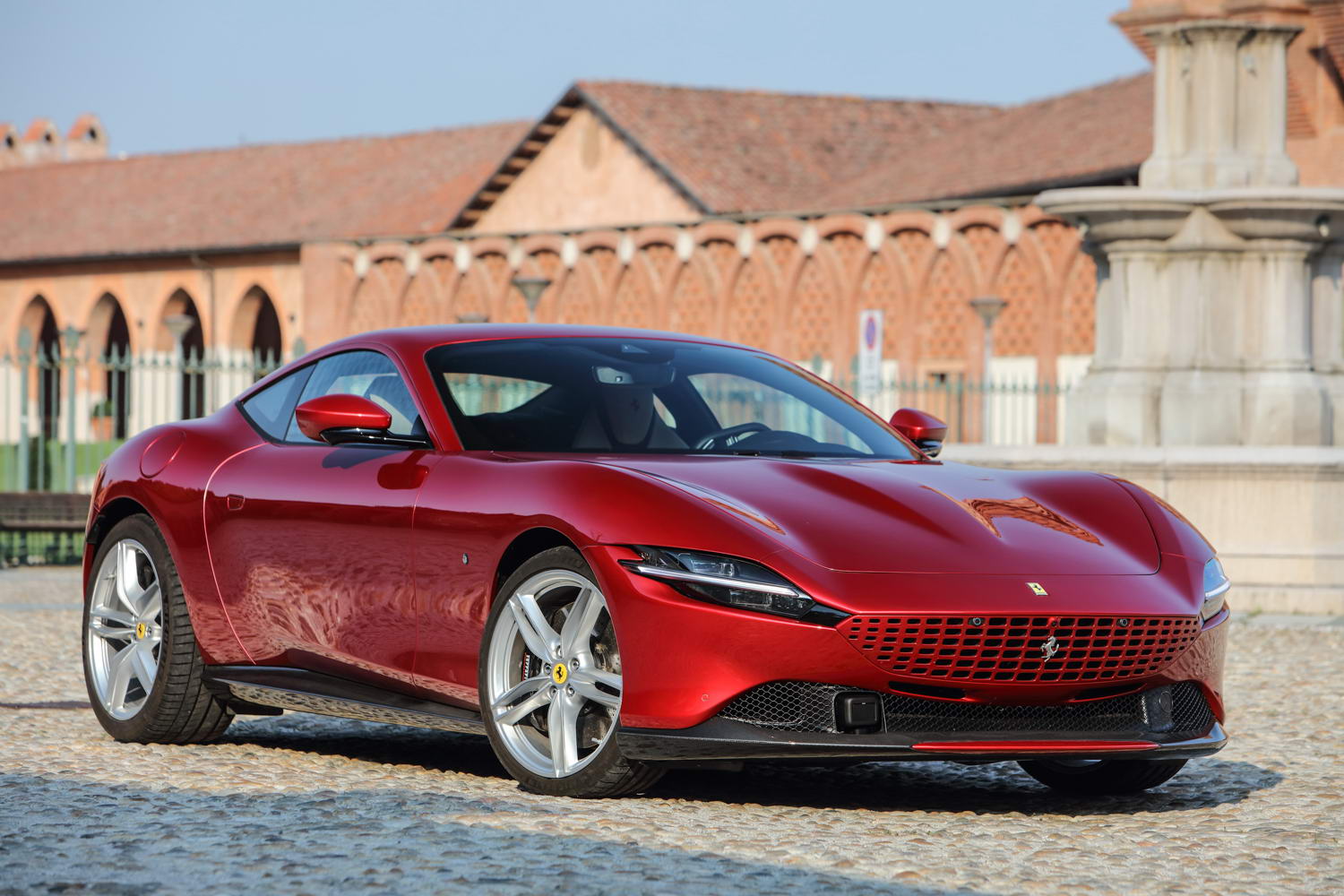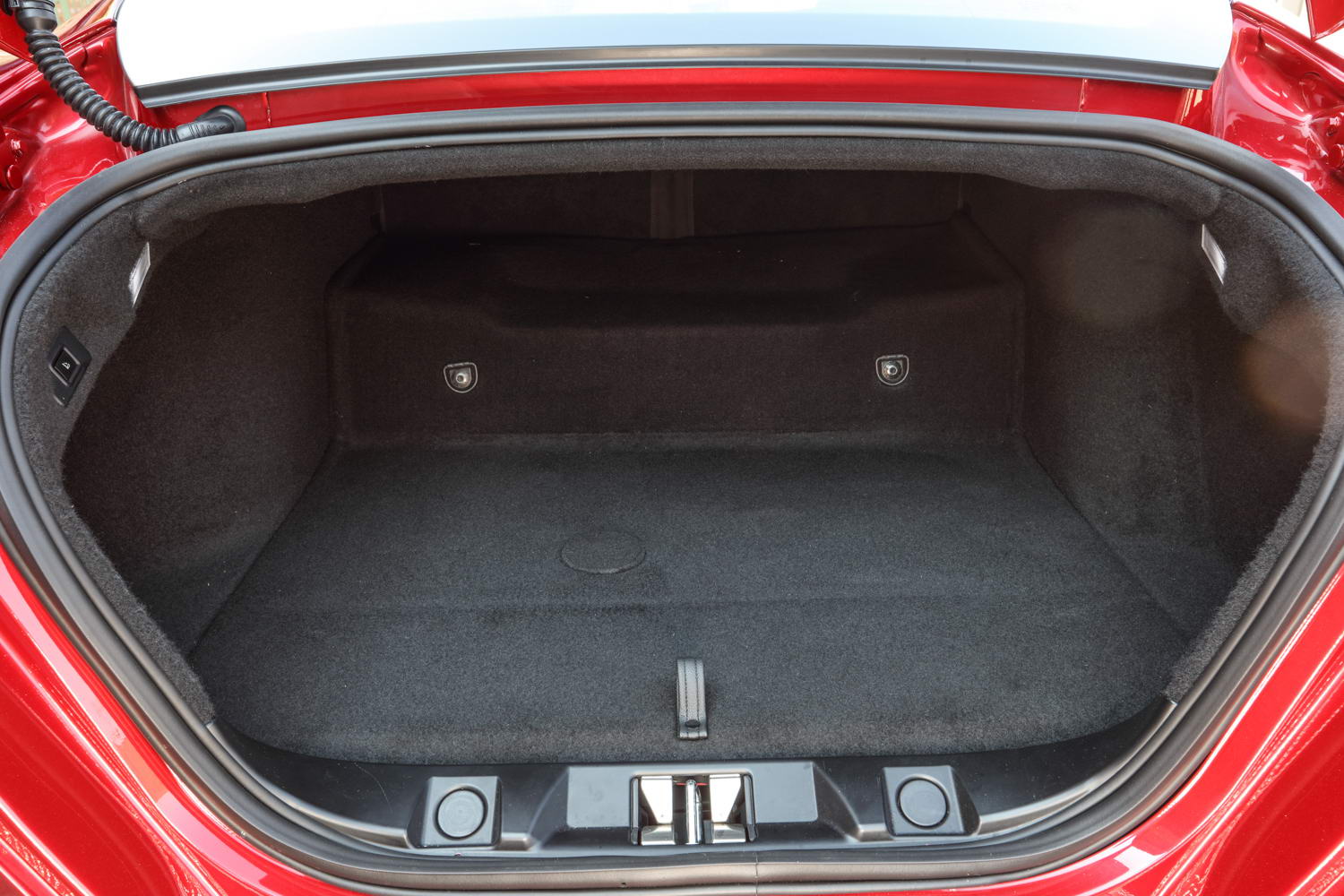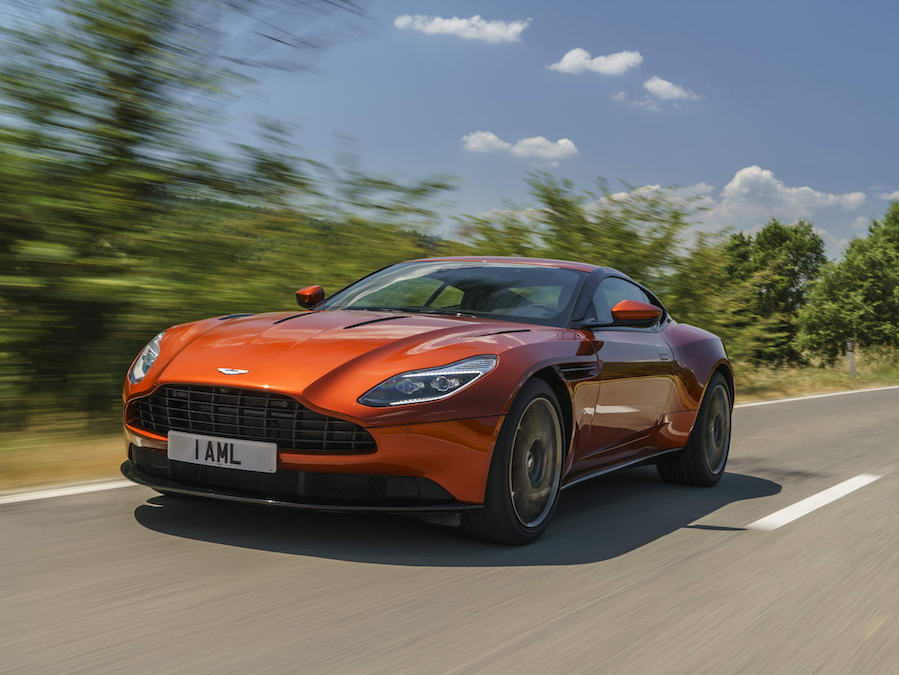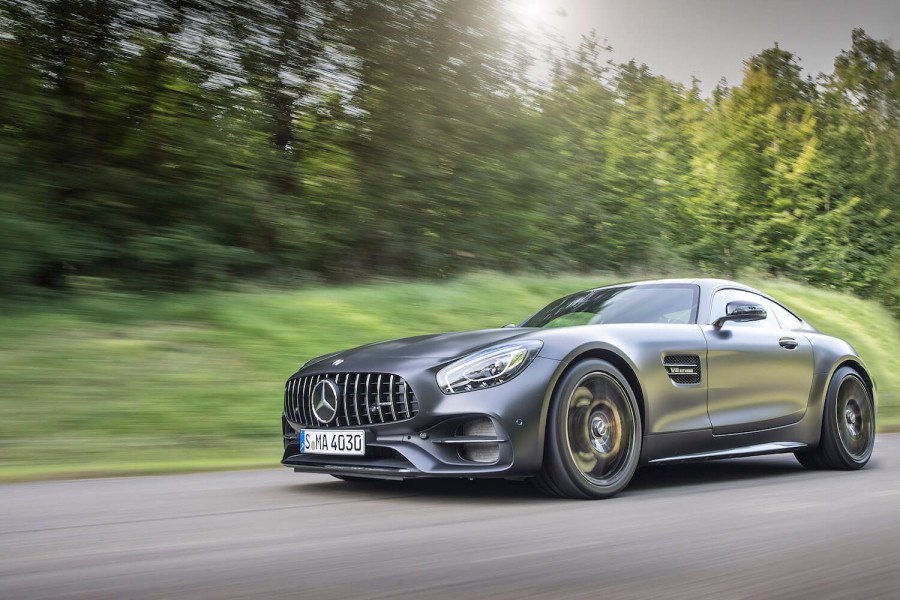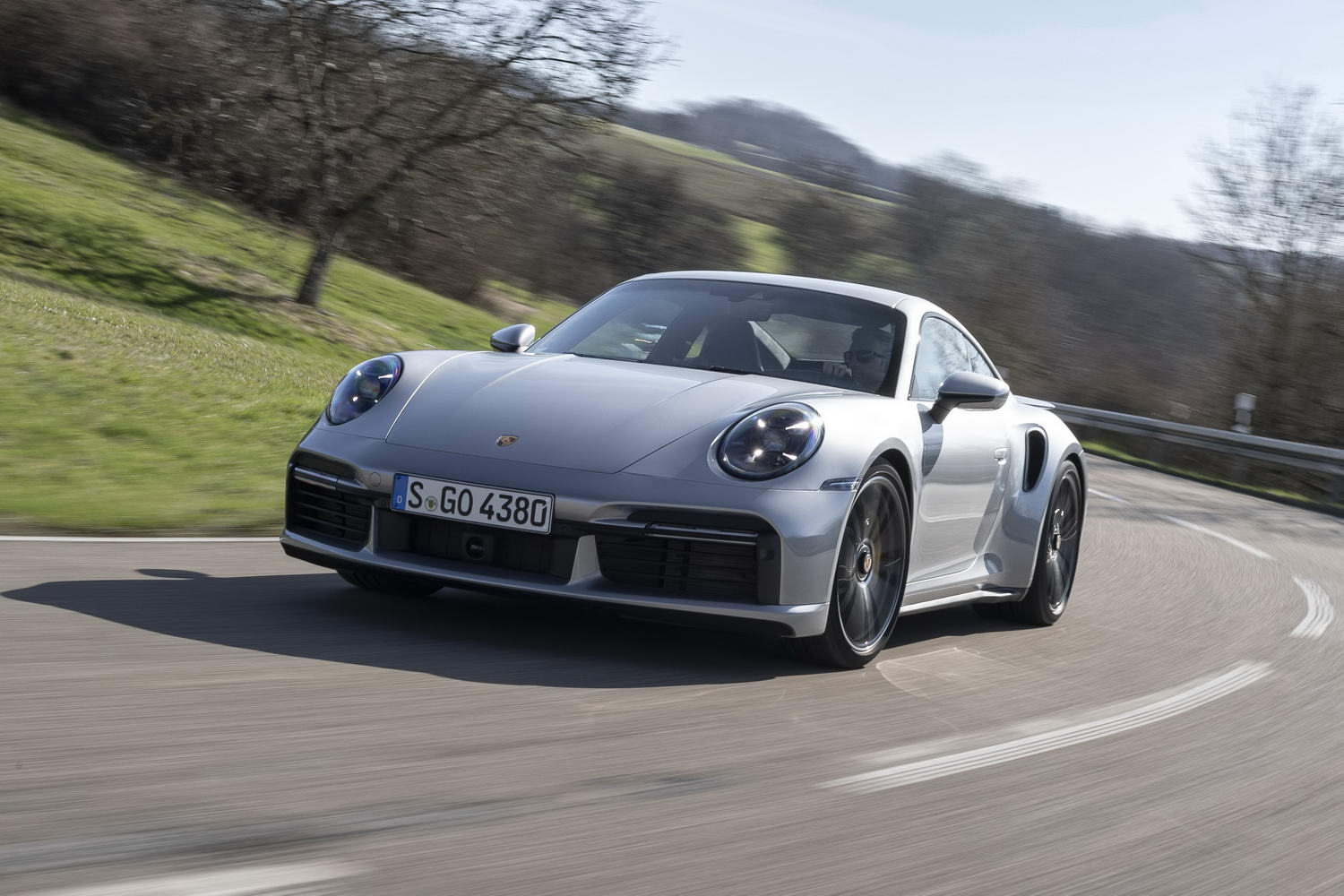The launch of the Ferrari Roma in 2020 may seem unusual as, on paper at least, it sits quite close to the existing Ferrari Portofino in remit. But there are more differences than you might expect, and time behind the wheel of the new two-door coupe reveals a more focused sports car.
In the metal
One of the first things that you'll notice about the Ferrari Roma when you first clap eyes on it in the real world is its relatively small size. The sloping bonnet appears as if shrink-wrapped over the engine and front wings. Emphasising the sharp leading edge of the car's nose is a new-look grille that harks back to the designs of the 1960s, albeit without the chrome finish. The fact that it is painted to match the bodywork makes it a bit unusual, and we remain undecided as to whether that's in a good or bad way. Other exterior features worth a mention include the option of a glossy carbon fibre styling pack (seen on this car), applied to the front splitter, side sills and rear diffuser area. As Ferrari did with its road cars of the 1950s, the scudetti (side shields) were not part of the original design of the Roma. They are optionally available, as is a lightweight kit that brings the Roma's dry weight down to 1,472kg (from 1,570kg), but doing so requires the choice of Alcantara inside instead of leather, along with the use of more carbon fibre.
A low, sloping roofline runs right down to the tail and, in conjunction with a narrow window area gives the Roma a sleek profile that you wouldn't expect to depict a four-seat coupe. Ferrari makes a point of referring to it as a '2+ coupe' rather than a 2+2, on account of the very compact rear seats, but they are there, nonetheless, and complete with ISOFIX points. A new look depicts the rear of the Roma, notable by its 'Kamm tail' shape and horizontal lights. Integrated into the base of the rear window is an active spoiler that lifts to two different angles according to vehicle speed. In keeping with the usable nature of the Roma, there's a decent boot that can accommodate two cabin-size suitcases.
Adding to the Roma's appeal is a unique interior design that creates individual cells for the driver and passenger. This layout is not as extreme as in the limited edition Ferrari Monza SP2, and you don't feel separated from your passenger as such, but it is an attractive approach that also further distances the Roma from the Portofino. The front seat passenger can follow your driving progress through an optional digital display inset in the dashboard fascia.
On the business side of the cabin Ferrari has installed its latest steering wheel design that appeared first in the SF90 Stradale. It is no longer festooned with buttons, as many of the controls are now operated by conductive touch controls that disappear when the ignition is off. That also means there is no longer a physical button for the engine starter, something that has been a feature of modern Ferraris since the F430. A curved 16-inch digital screen replaces the traditional instrument cluster and it looks fantastic; it's clear, crisp and offers plenty of configurability. A neat 8.4-inch portrait-style touchscreen is nestled within the slender centre console, appearing as if it has just been placed there rather than hard-mounted. As well as being quick and responsive, it can also run Apple CarPlay and Android Auto.
Driving it
Some of the Roma's core architecture is the same as the Portofino's, which is why the wheelbase is identical, but in every other dimension they differ. The Roma is 17mm lower and 36mm wider, for a start, while the front and rear tracks are also wider, by 19- and 44mm, respectively. In all, Ferrari says, 70 per cent of the chassis and body-in-white has been redesigned and the lack of the Portofino's heavier folding hardtop roof mechanism helps contribute to an overall weight saving of 94kg. Along with the decrease in weight, Ferrari has lowered the Roma's centre of gravity, all of which contributes to a car that feels sharper and more direct in how it handles.
After pressing the start 'button', the revised V8 barks into life with all the theatre you would expect from a Ferrari. Considering the everyday usability and somewhat understated styling, the Roma isn't that quiet. Part of that is a result of a new exhaust system that does away with the traditional silencer, thus reducing back pressure and enhancing sound quality.
The new eight-speed dual-clutch automatic gearbox is lifted from the Ferrari SF90 Stradale, though adds a mechanical reverse gear in place of the Stradale's electric one. A smaller clutch design means it can sit lower in the car and it weighs 6kg less than the old seven-speed unit. How it delivers the gears depends largely on what position the 'manettino' switch is in. A further nod to the company's past is the chrome panel that holds the controls for selecting reverse, auto or manual gearbox modes - it mimics the open-gate of past Ferrari manuals.
Leaving the manettino in the Comfort setting is the obvious choice for those planning to commute in the Roma. As you pull away it wastes no time smoothly upshifting towards the higher gears, keeping engine speeds down and adding to the Roma's civility. Despite what appears to be a shallow glazed area, the visibility is reasonably good from the cabin, even rearwards, though you are reliant on the (optional) reversing camera when parking.
Not that you'll want to leave it sat idle for that long, as the Roma can deliver plenty of thrills. Turn the dial up even one notch to the Sport mode and the transmission becomes instantly more alert and eager. The twin-turbocharged V8 engine has received some new internals and power output rises to 620hp. It is phenomenally responsive and fast-revving with no signs of lag. Whether you choose to upshift manually via the large and weighted paddles or let the software do it for you, the gears arrive with more force, more purpose and the downshifts are just as good as you hone in on the next apex. As you blast away from that the rear end is prone to give a little wiggle on some surfaces as the Michelin tyres transfer all that power to the tarmac. Ferrari's latest evolution of Side Slip Control lets you have some fun without getting into bother. For the full effect you can now access the Race mode, previously not available on Ferrari's GT cars, and this setting also activates the FDE (Ferrari Dynamic Enhancer). This aids the stability control with minor brake inputs to make the handling more controllable and predictable.
What many drivers will take away from more enthusiastic use of the Roma is how the front-end behaves. When you look beyond the topography of the bonnet it can be easy to forget that this is a front-engined car. With the block sitting more in a front-mid position, there isn't the same weight impact on the forward axle and the electrically assisted steering telegraphs ample amounts of feedback to the driver. It devours the road when asked to do so and corners with much of the flatness and poise of a mid-engined supercar.
What you get for your money
There is just one standard specification for the Ferrari Roma, but there is a vast array of different ways in which owners can specify the car with the only limitations seeming to be budget and imagination. Standard items include 20-inch wheels, carbon ceramic brakes, full LED headlights, cruise control, that excellent 16-inch instrumentation display and the 8.4-inch infotainment screen in the centre console. From a driving perspective, the Roma comes with everything you will want, the rest is mostly cosmetic personalisation. Furthermore, all new Romas come with a four-year warranty and the Ferrari Genuine Maintenance programme that covers routine servicing costs for seven years from the date of first registration.
Summary
The Roma is a perfect jumping-in point for someone considering their first Ferrari. It satisfies the need for daily use without taking away from the sheer fun of driving. Looking far sleeker than the GTC4Lusso and delivering a smidge more power than the T version, the Roma is more of a driver's car while maintaining the elegance of a classically proportioned sports coupe.

